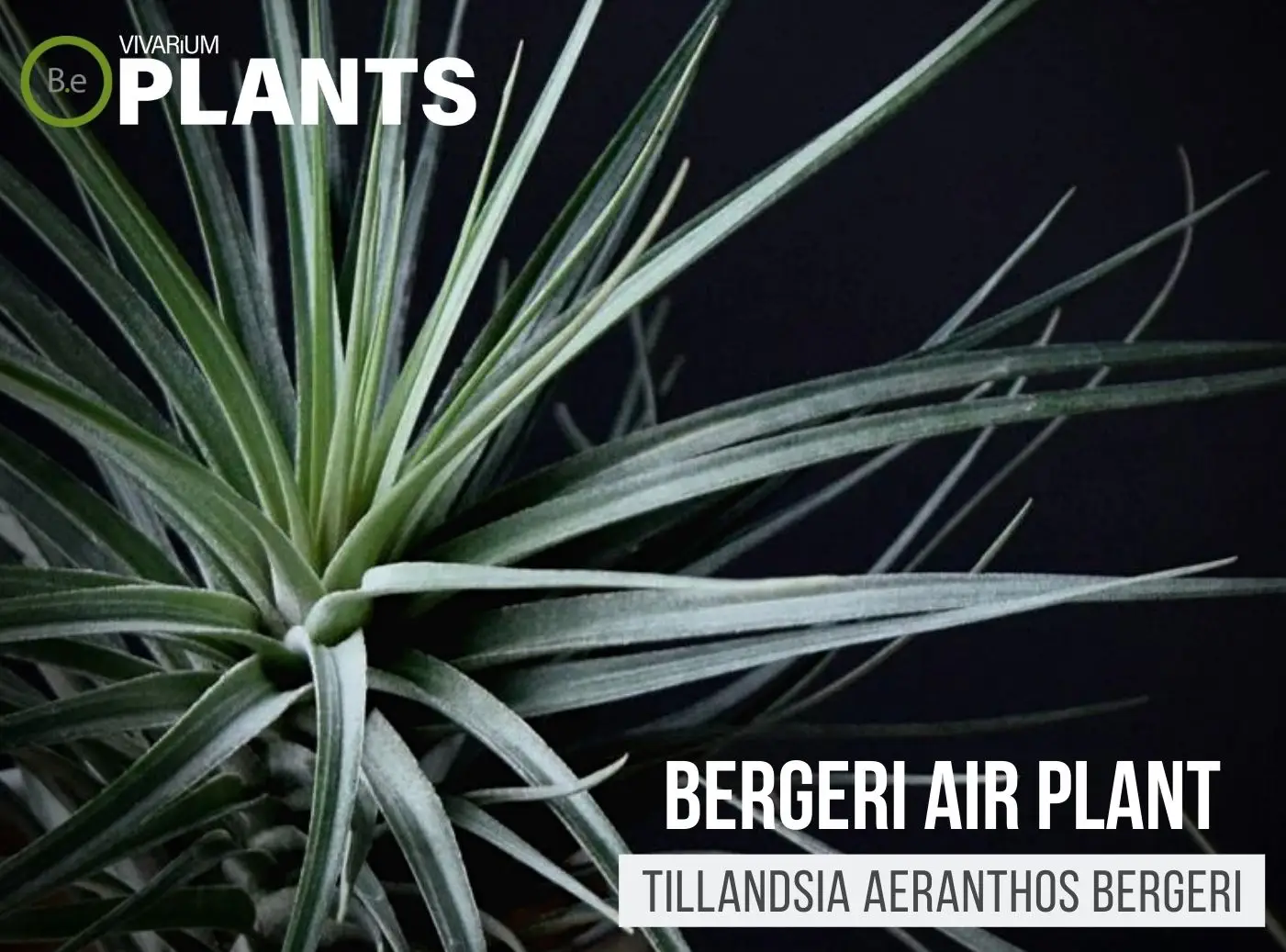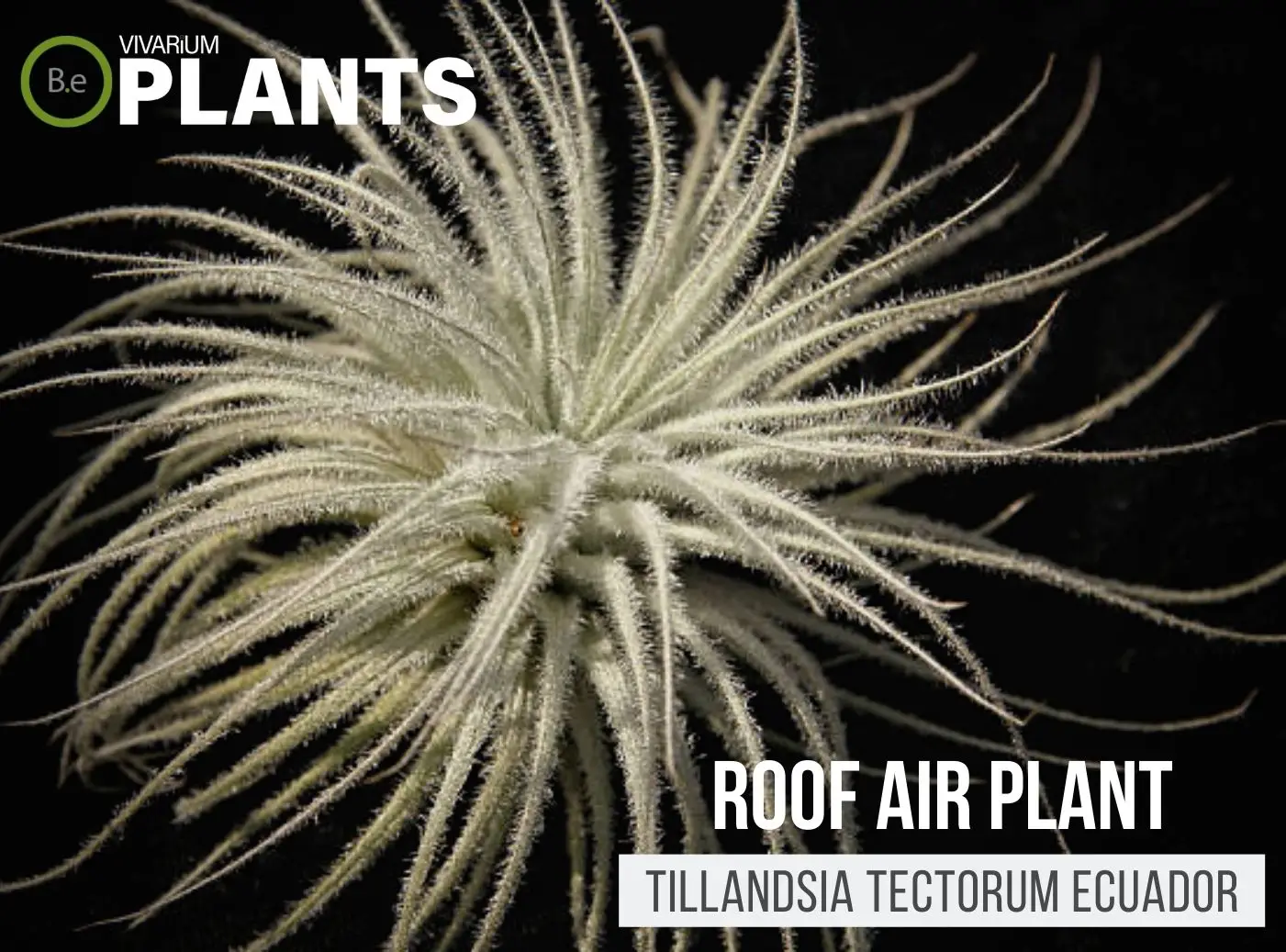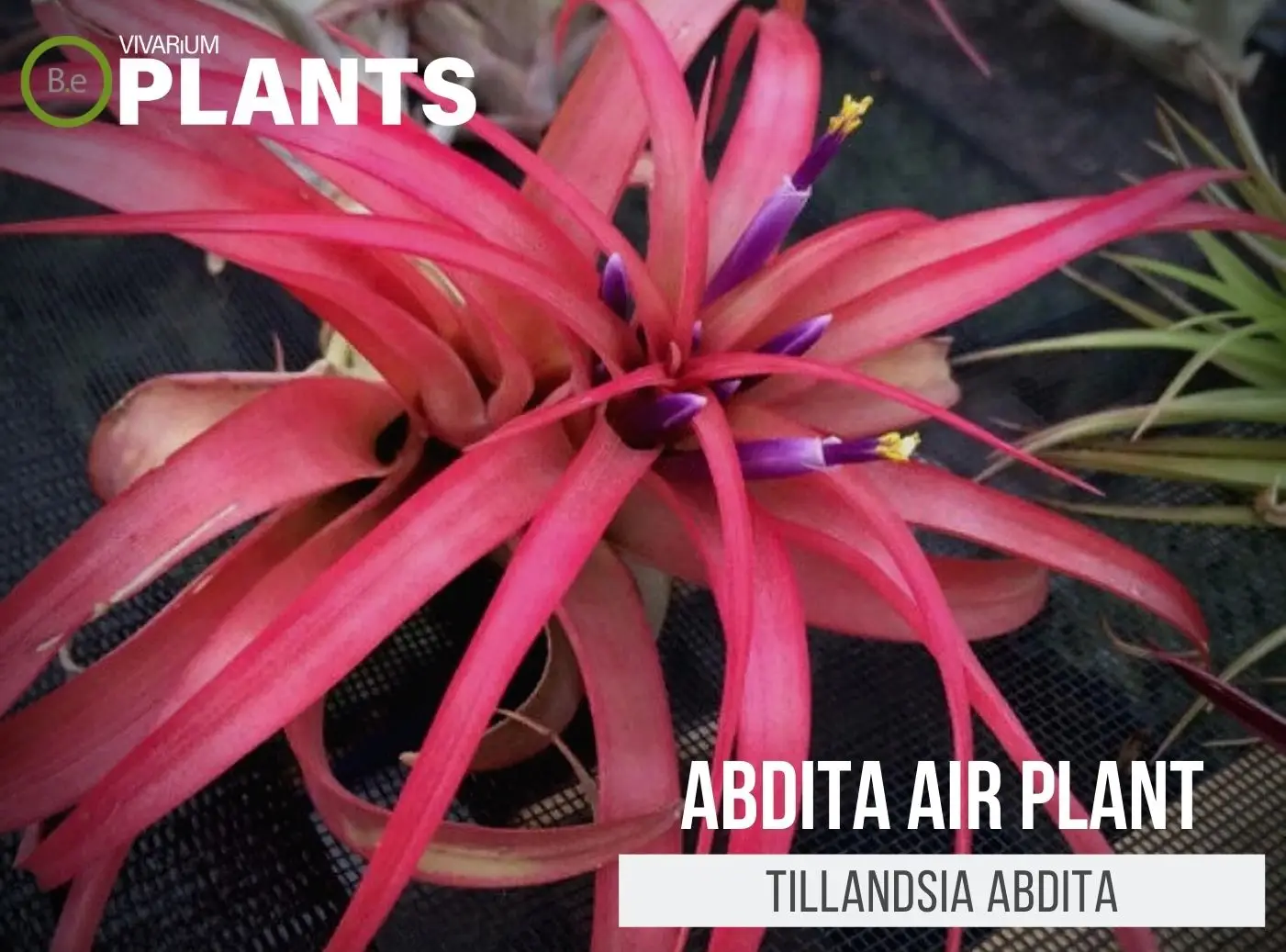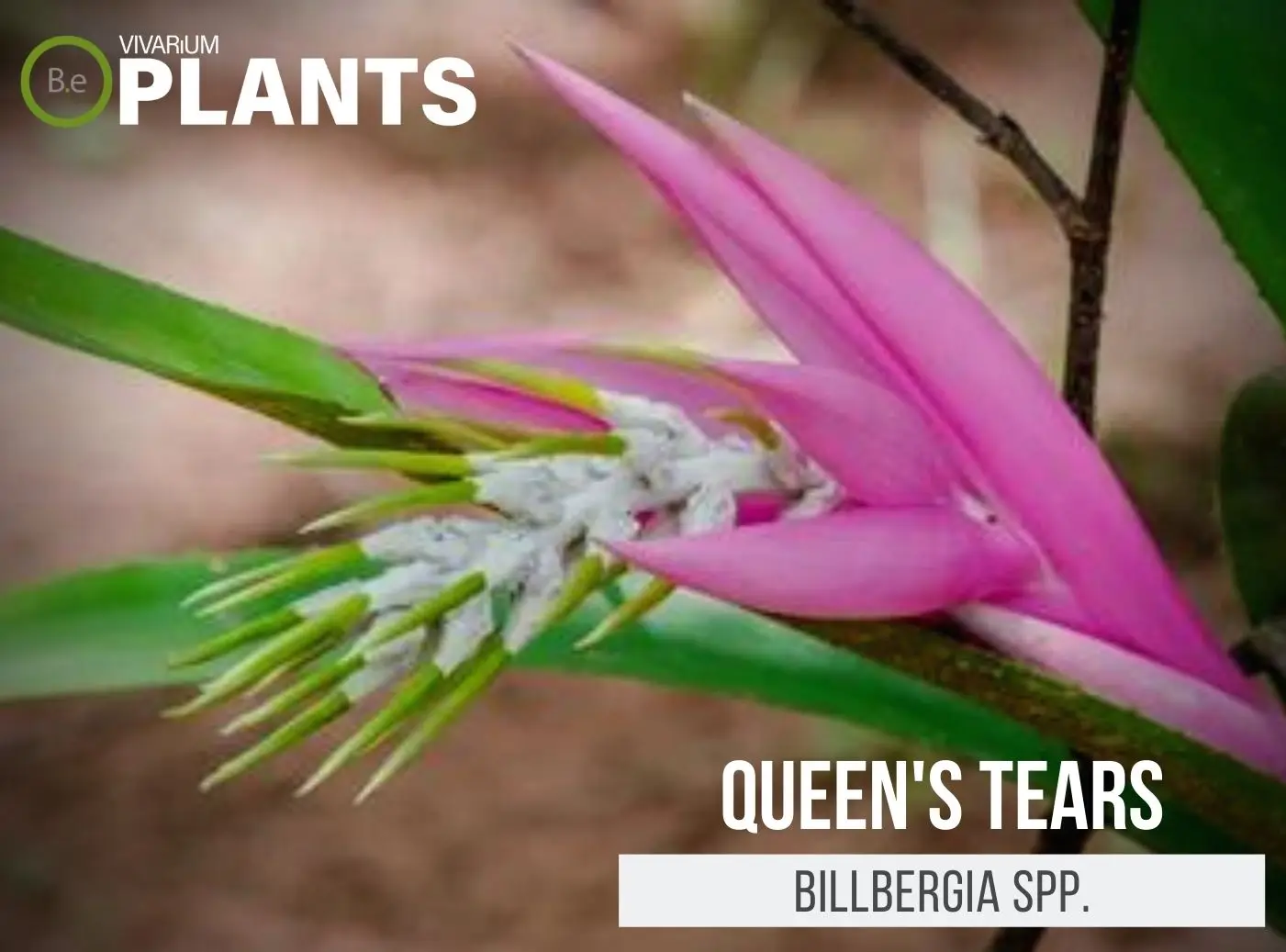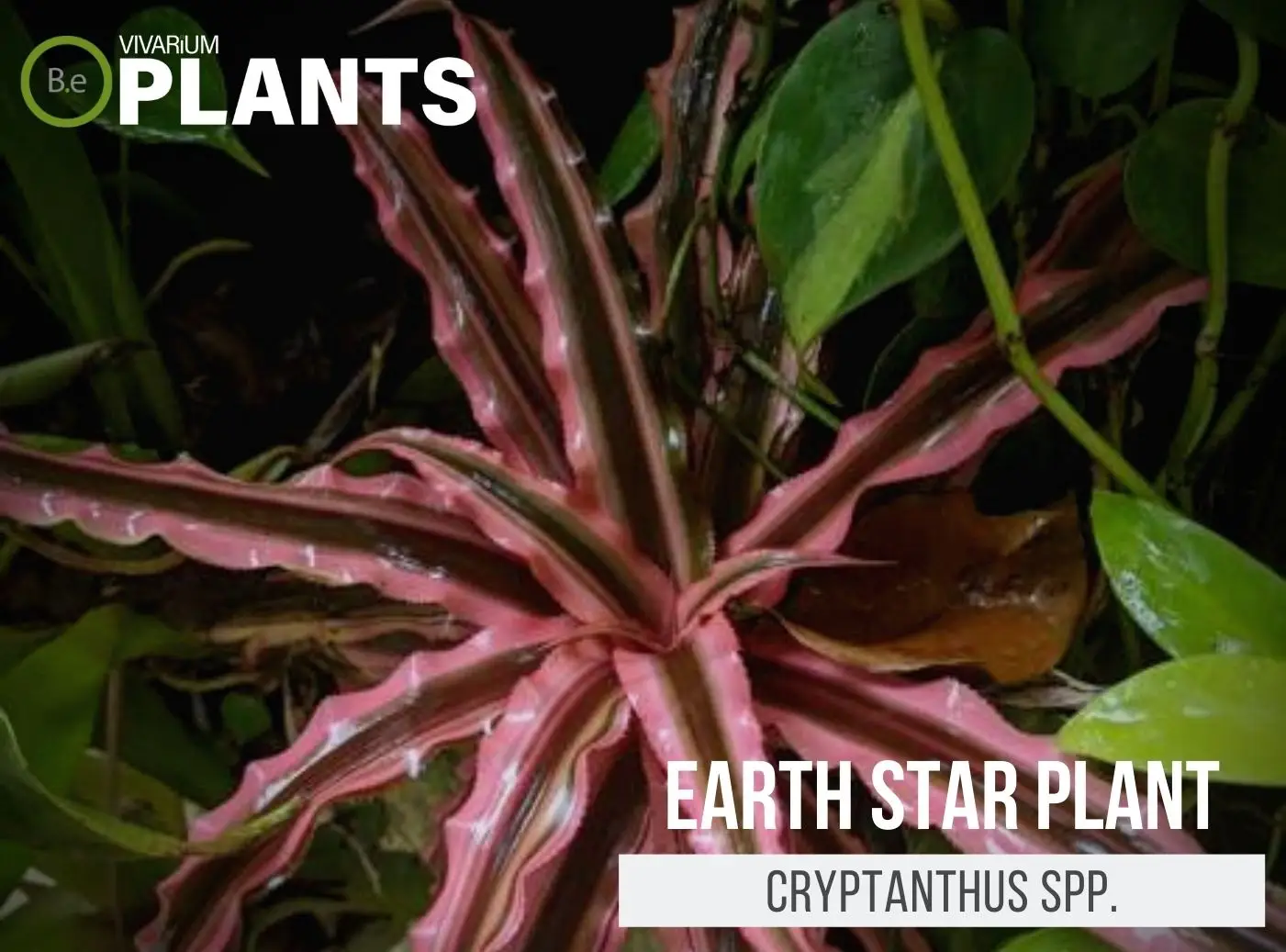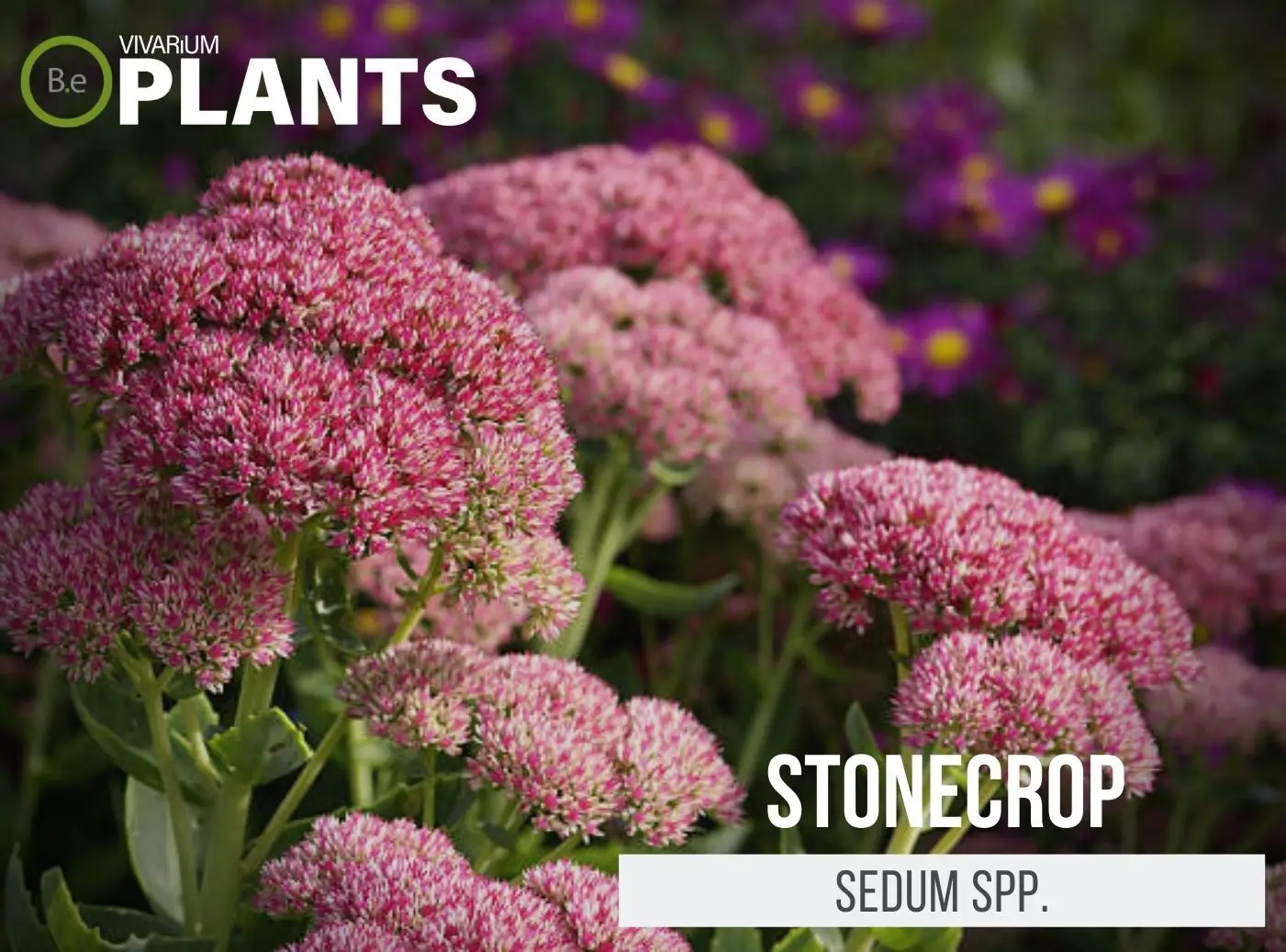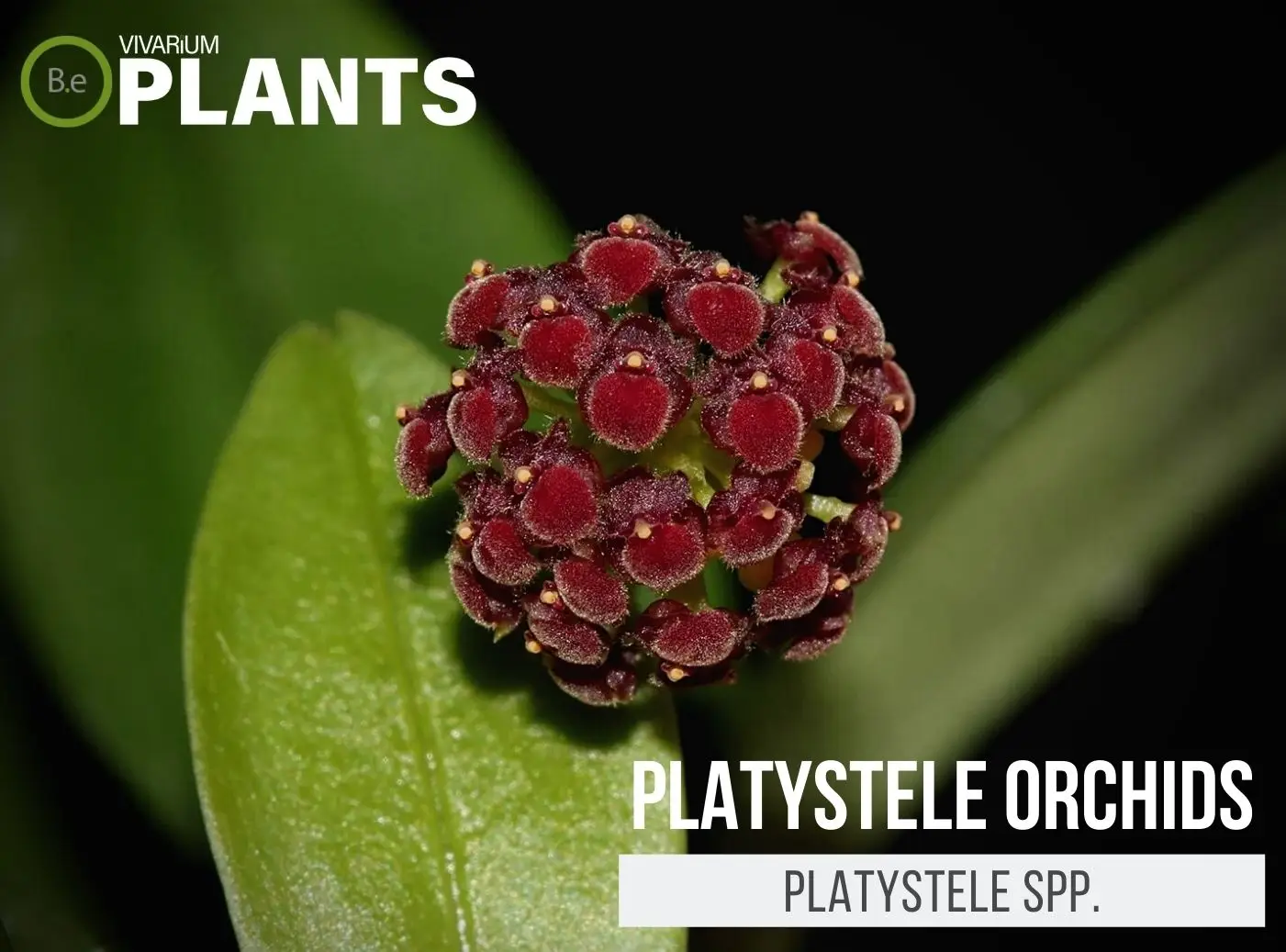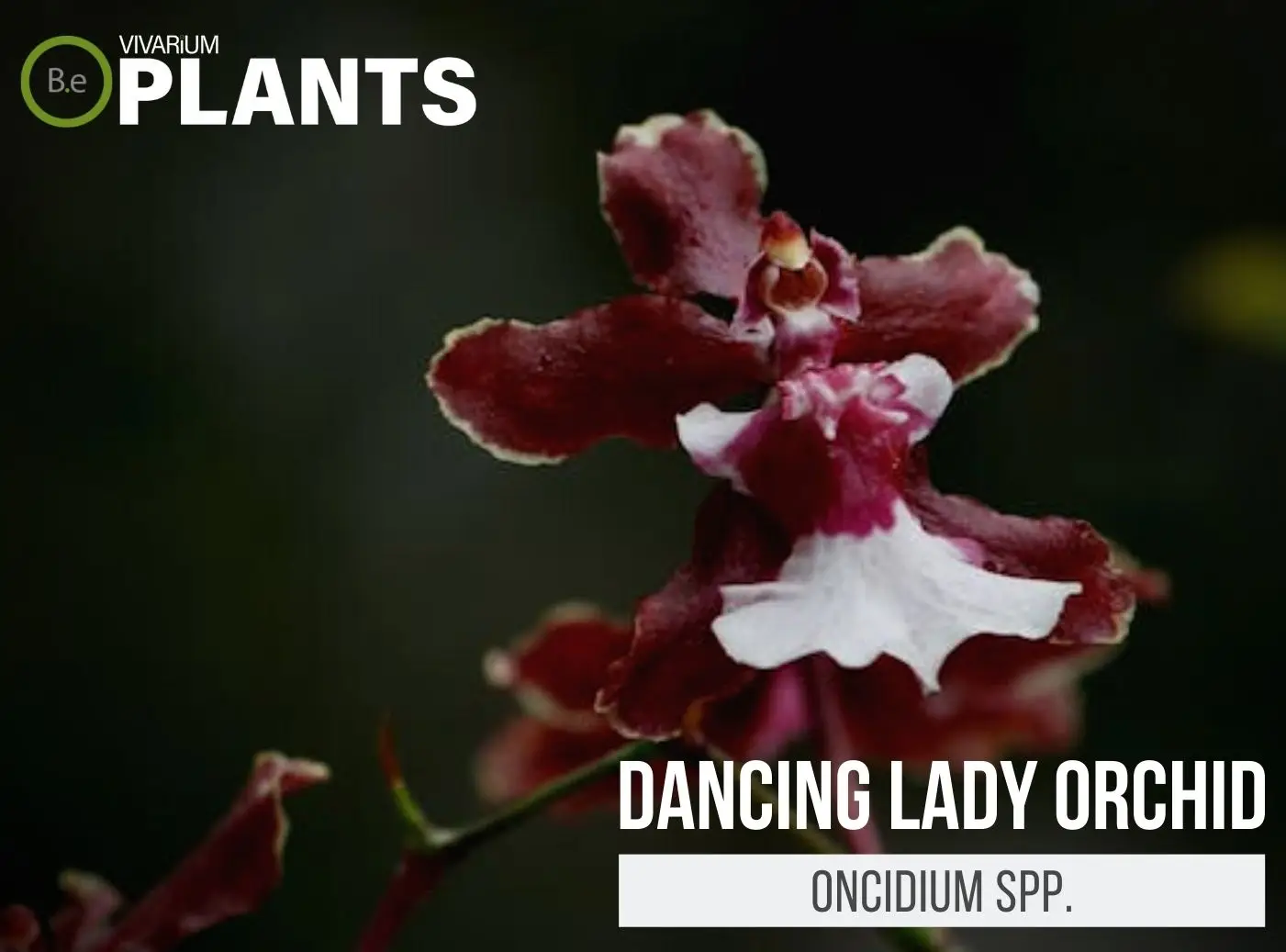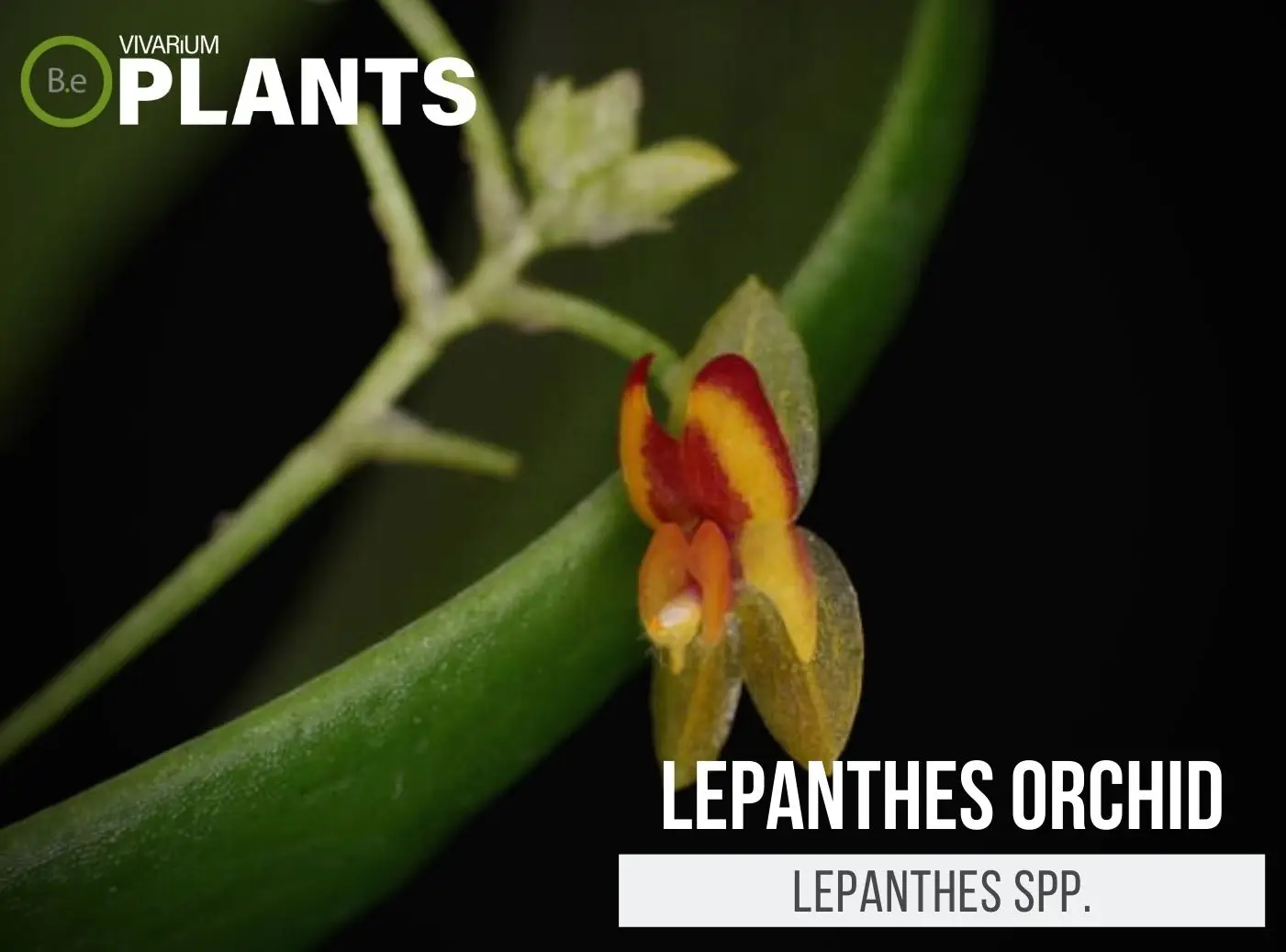If you want to build a terrarium that doesn’t have a lid, you will need to consider a variety of specific plants that do well in that type of ecosystem. Open terrarium plants are a great option to consider!
They are evolved to handle the sometimes arid conditions and tend to benefit from the free-moving airflow as well as many other elements that come with lid-free enclosures.
In this article, we’ll discuss the benefits of open terrarium plants, the different types available, how to set up and care for your terrarium, and some tips for keeping your plants alive. If you’re looking to add a bit of greenery to your space, open terrarium plants are a perfect choice.
Benefits of Open Terrarium Plants
Open terrarium plants are a great choice for those looking to add foliage to a setup that doesn’t require a lid. Many of these types of plants are capable of thriving in arid conditions.
They also come in a variety of vibrant colors, offering a unique opportunity of adding a pop of color to any space. Plus, open terrarium plants are natural air purifiers, meaning they can help to clean the air in your home with the addition of a pleasant scent.
With open terrarium plants, you can enjoy all of the benefits of having plants in your home without having to worry about the extra humidity that comes with closed terrarium plants.


Best Types of Open Terrarium Plants
When choosing the best types of open terrarium plants for open–top terrariums, some important considerations should be taken into account.
The size and structure of the terrarium and the type and amount of sunlight available should be considered.
Additionally, plants must be chosen that can tolerate the lack of humid conditions of this type of terrarium and require low maintenance.
A healthy balance of foliage and airflow, as well as an adequate selection of plants, should all be kept in mind in order to create a successful terrarium garden.
Best Air Plants for Open Terrariums
Air plants are an increasingly popular, easy-to-care-for type of open terrarium plant. Requiring minimal maintenance, these low-water plants are great for busy or inexperienced plant parents.
Air plants absorb moisture and nutrients from the air, making them a great countertop or office addition.
Air plants come in a variety of colors and sizes, with unique characteristics and growth patterns, giving them a unique, fun appearance.
They are a great choice for those looking to incorporate some greenery into their home.
Bergeri Air Plant (Tillandsia aeranthos Bergeri)
Bergeri Air Plant is an open terrarium plant that is native to Brazil and is known for its unique shape. It has attractive, leafless green stems with flocking at the base and bright yellow blossoms according to season.
It is great for open terrariums because it is a very low maintenance and water–wise plant that can easily be incorporated into any type of open–style terrarium.
It is also easy to care for, needing a light spray or mist every couple of weeks and prefers bright, indirect light. Bergeri Air Plant is sure to be an eye–catching addition to any terrarium!
Brachycaulos Air Plant (Tillandsia brachycaulos)
The Brachycaulos Air Plant is a beautiful and hardy plant, perfect for open terrariums.
It has thick, waxy leaves that form a rosette shape and the foliage can be either silver–green or stretch to dark green depending on the amount of light it receives.
It is easy to care for, requiring little water and no soil. The attractive foliage and unique shape make the Brachycaulos ideal for open terrariums because it thrives in bright and humid environments.
Additionally, its slow rate of growth and size make it a great choice for terrariums as it is not likely to outgrow its container.
Medusae Air Plant (Tillandsia caput-medusae)
Medusae Air Plant, also known as Tillandsia caput-medusae, is an eye–catching addition to any open terrarium.
This unique air plant has a hairlike, flexible green foliage that is shaped into a dome, shielding a large purple and violet bloom when in full bloom.
The Medusae Air Plant can withstand harsh direct sunlight and only needs to be misted with water or placed in natural humidity once a week to thrive.
It doesn‘t even need soil, making it an ideal plant for terrariums without a soil layer.
What really sets the Medusae Air Plant apart is its ability to survive in both very dry and humid environments, making it perfect for open terrariums where there is no regulation of humidity levels.
It also doesn‘t require frequent repotting, making it a great low–maintenance addition to any terrarium garden.
Roof Air plant (Tillandsia tectorum Ecuador)
The Roof Air plant, also known as Tillandsia tectorum Ecuador, is a terrific terrarium plant due to its hardy nature and showy beauty.
This air plant has a curved, scaly stem and pale silver–blue leaves that curve outwards, giving it an eye–catching shape and color.
It requires little care and can make an ideal addition to an open terrarium as it only needs bright, indirect light. It can also survive in a number of conditions, from humid to dry and from low to bright light, as long as its roots are well–drained.
The Roof Air plant is an easy-to-care-for open terrarium plant with a great aesthetic and is sure to bring a unique touch to any terrarium.
Stricta Air Plant (Tillandsia stricta)
Stricta Air Plant is an eye–catching and versatile terrarium plant. It is a low–growing member of the Bromeliad family and is native to the dry forests of Central and South America.
With its slender leaves and rosettes of spiky blooms, Stricta is a colorful addition to any terrarium.
In nature, Stricta Air Plant is well–adapted to survive in semi–arid climates and makes a great choice for open terrariums because it is low–maintenance and thrives in airy and open environments.
The leaves are finely pointed and have a nice green and blue color, making the plant blend easily into the environment.
Fertilizing with water–soluble bromeliad fertilizer once a month and allowing the plant to dry between waterings is all that is needed to help this plant thrive.
Sky Plant (Tillandsia Ionantha)
Tillandsia Ionantha, also known as Sky Plant, is a favorite for open terrariums due to its dainty, bright green leaves and its ability to thrive in humid environments with minimal care.
It is a flowering, epiphytic Bromeliad, meaning it can absorb nutrients and water through its leaves and grow on other plants as an air plant, making it an ideal open terrarium plant.
Its small size allows it to fit well in open terrariums and create beautiful displays when paired with other plants.
Its unique leaves sparkle with silvery tones due to its glittery scales, adding a charming touch to the terrarium. Sky Plant works best in open terrariums without lids, as this allows for optimal light and airflow.
Bulbous Air Plant (Tillandsia bulbosa)
The Bulbous Air Plant is a delightful addition to any open terrarium, thanks to its exotic, eye–catching appearance.
This flowering plant has bright green, strap–shaped leaves which curl in a funnel at the tip. Its striking bright yellow flower appears periodically and emerges from the center of the plant, adding visual interest and color to the terrarium.
This sturdy plant can tolerate varying levels of humidity, temperatures, and light conditions, making it ideal for terrariums with open tops.
It requires no soil and can be lightly misted or watered with a specialized air plant fertilizer to ensure it receives the nutrients it needs. With its elegant and vibrant look, the Bulbous Air Plant is a show-stopping addition to any terrarium.
Abdita Air Plant (Tillandsia abdita)
Abdita Air Plant is an attractive, low–maintenance terrarium plant native to Mexico and northern Central America. Its silvery–green foliage is textured and curved, giving the clump an almost wooden look.
It thrives best in warm and humid environments and requires very little soil. Abdita Air Plant is perfect for open terrariums because it can absorb moisture and nutrients directly from the air.
As a bonus, it‘s also very easy to care for, only needing water and light to stay healthy. Its hardiness, interesting foliage, and ease of care make it a great choice for terrariums.
King of Air Plants (Tillandsia xerographica)
The King of Air Plants, Tillandsia xerographica, is an ideal open terrarium plant.
This plant is a tropical perennial evergreen, growing between 12–24 inches tall with light green leaves and silvery–white scales that give it a unique look.
It prefers warm, humid environments and bright, indirect light. With its drought tolerance, tolerance of low light conditions, and its ability to thrive without soil, it is great for open terrariums.
Tillandsia xerographica has a stunningly large crown that radiates outward and provides a unique beauty to your terrarium. Its silver–gray foliage will catch the light and make a bold statement in your plant container.
Additionally, its ability to thrive without soil makes it a great choice for open terrariums as it won’t collect water and cause drowning or create a muddy mess.
Andreana Air Plant (Tillandsia andreana)
Andreana Air Plant, also known as Tillandsia andreana, is an ideal open terrarium plant. It is a small, silver–green plant that can fit nicely in the terrarium without overpowering it.
Andreana Air Plants are drought tolerant, making them perfect for an open, easy–care terrarium.
Furthermore, they grow quickly, so they make great terrarium accent plants, and they bring a vibrant touch of green to any dry terrarium.
As they grow, they tend to elongate and become long–stemmed with offshoot air plants from their parent stalks. This makes them great for layering and adding texture in open terrariums.
Best Bromeliads For Open Terrariums
Bromeliads are an exciting type of open terrarium plant for the home. They add a unique, tropical feel and come in a variety of colors, sizes, and shapes.
With beautiful and unique foliage, bromeliads are also incredibly low maintenance, requiring little water and great air circulation to thrive.
Bromeliads uniquely absorb moisture and nutrients through their leaves, making them a great choice for open terrariums, as they require less frequent watering than other plants, while still producing vibrant and colorful blooms.
Tank Bromeliad (Neoregelia spp.)
Tank bromeliads, also known as Neoregelia spp., are a great open terrarium plant due to their easy care and vibrant colors.
These plants come in a variety of colors, shapes, and sizes, many of which have patterned or striped leaves.
The Neoregelia plant is an epiphyte, meaning it does not require direct soil contact and will happily sit on branches, bark, and stones.
It’s ideal for an open terrarium as it loves humidity, especially when it begins to flower and form its characteristic colorful cup at the center of the leaves.
Neoregelia plants also require bright light and low levels of fertilizer, making them ideal for terrariums where they will never need to be repotted!
Queen’s Tears (Billbergia spp.)
Queen‘s Tears is a stunning evergreen epiphytic bromeliad that is native to humid tropical climates. It has glossy, stiff, scalloped–edged leaves with mauve–pink and silver overtones, and produces an exquisite blossom of purple and pink.
Queen‘s Tears has a compact and low–growing form, making it an excellent choice for open terrariums. A terrarium with indirect light and high humidity is most suitable for this lovely plant.
Queen‘s Tears is quite tolerant and can withstand occasional irrigation, making it easy to care for. Most importantly, this plant looks stunning and can lend an eye–catching accent to any terrarium setup.
Flaming Sword Bromeliad (Vriesea spp.)
The Flaming Sword Bromeliad is a stunning tropical plant that is perfect for terrariums.
It has bright bronze-green leaves with light edges and a light red–colored flower spike with blooms colored yellow and orange.
As an open terrarium plant it is easy to care for, as it tolerates a range of lighting levels, does not require much water, and can survive in a range of soil types.
Plus, this bromeliad is ideal for open terrariums, as its leaves are designed to collect and hold water, making it the perfect plant for growing in a humid atmosphere.
The water stored in the leaves can also act as a reservoir for other plants in the terrarium, which is a great addition for plants that need more humidity.
Earth Star Plant (Cryptanthus spp.)
The Earth Stars Plant is a perfect choice for open terrariums! It comes from the bromeliad family and its foliage typically has a rosette form.
It is a variation of the other important bromeliad in the family, the starfish plant. Its leaves are usually pink, purple, and brown with a mottled appearance.
Earth stars are slow growing and make a great addition to terrariums because they won‘t grow too large or take over too much space.
They can also thrive in warm, humid climates with occasional watering. They look best when planted in groups to create a beautiful, full look.
Lastly, earth stars are incredibly low–maintenance, which makes them perfect for a busy individual who wants to enjoy their terrarium without having to dedicate a lot of time and energy.
Silver Vase Plant (Aechmea spp.)
The Silver Vase Plant is an evergreen plant species that is ideal for open terrariums. It is a tropical epiphytic bromeliad with striking, black–gray foliage patterns and can reach up to two feet in height.
Its leaves arch outward, creating a vase–like appearance, and feature showy, straw–colored flower spikes when mature.
The Silver Vase Plant is great for open terrariums due to its low maintenance requirements and tolerance to light and water.
With the proper environment and care, the Silver Vase Plant will thrive and adds a vibrant, tropical accent to any terrarium-scape.
Best Succulents For Open Terrariums
Succulents are a unique and hardy type of plant that makes a great addition to any open terrarium. A succulent terrarium is a great way to bring air-purifying and stylish greenery into your home.
These plants are known for their ability to store water in their thick fleshy leaves, making them perfect for hot and dry climates. They require little care and are very easy to propagate, making them a great choice for novice gardeners.
With the right setup and care, a terrarium filled with succulents can add a dramatic and beautiful touch to any home.

Chalk Dudleya (Dudleya pulverulenta)
Chalk Dudleya is a succulent plant native to coastal California. It has a unique appearance with light green, triangular leaves covered in a fine, white powdery coating, or bloom.
It is most easily recognized in its rosette shape, with blooms of white and yellow flowers appearing in the spring.
Chalk Dudleya can thrive in an open terrarium due to its high tolerance to heat and sun. It requires well–draining soil and regular watering during the growing season and minimal water in the winter months.
Its slow rate of growth and low maintenance make it perfect for open terrariums. It doesn‘t require pruning or regular repotting and it will bring a touch of color and texture to your space.
Flaming Katy (Kalanchoe blossfeldiana)
Flaming Katy, also known as Kalanchoe blossfeldiana, is a flowering succulent species native to Madagascar.
It is a popular terrarium plant due to its vibrant orange, yellow, red, and pink flowers and its near-thornless, oval-shaped waxy leaves.
This open terrarium plant’s low-maintenance care requirements make it a great option for arid terrariums, as it requires full sun, low humidity, and well-draining soil.
It is perfect for terrariums with a warm and dry environment and can even survive without water for long periods of time. Its abundant flowers make it a beautiful addition to any terrarium, adding a splash of bright color.
Ball Cactus (Parodia magnifica)
Ball Cactus is a perfect plant for adding a little drama to your terrarium. This slow-growing cactus is a low-maintenance plant that swells into a magnificent, globe-shaped formation.
Its unique form and coloring add a stunning contrast to its sandy environment. The ball cactus has bright yellow-gold flowers, sprinkled over a distinctive gray-green background.
As an adaptation to its arid environment, it features fuzzy, white hair or spines, giving the sphere-shaped body an added level of texture and visual interest.
Ball Cactus is the perfect plant for open terrariums, as the bright sunlight helps it to keep its shape, while still receiving all the necessary water to survive.
Additionally, this slow-growing cactus is tolerant of dry air, making it well-suited for terrariums with less frequent watering.
Hens and Chicks (Sempervivum tectorum)
Hens and Chicks is an ideal terrarium plant. This hardy and low-maintenance succulent has become very popular recently as an open terrarium plant and comes in a wide variety of shapes and sizes.
It produces beautiful rosette-shaped leaves with a bright and cheery set of purple, pink, yellow, and white flowers in the summer.
Its small size and hardy nature make it perfect for open terrariums, as it can tolerate more intense sunlight than most other terrarium plants.
Also, it requires very little water and can happily exist in a wide variety of terrariums.
Hens and Chicks is a colorful, interesting, and durable open terrarium plant that’s sure to bring lots of life and beauty to any terrarium.
Stonecrop (Sedum spp.)
Stonecrop is a low-growing succulent plant that makes for a great open terrarium plant. It has thick, fleshy green or yellow foliage that grows in dense mats or upright rosettes.
This perennial’s leaves hold water well and its thick stems are able to tolerate dry soil and shade. It is slow-growing and does not require much maintenance.
Its vibrant colors bring life to any open terrarium, and its low-growing structure adds texture. Its hardy constitution makes it great for open terrariums since it will not easily be overwatered.
Jade Plant (Crassula ovata)
The Jade Plant, also known as Crassula ovata, is an ideal open terrarium plant because it is drought tolerant, requires little care and maintenance, and is a low-growing succulent.
It has lush, round, waxy green leaves and is a great choice for open terrariums. Its foliage can range from light green to dark green, depending on how much light and water it gets.
It is tolerant of a variety of temperatures and light levels, allowing it to thrive even in low light conditions, making it a great choice for terrariums and windowsills.
Its ability to survive a wide range of conditions is what makes it so great for open terrariums. The jade plant grows slowly, making it an ideal choice for terrariums that need a longer-term maintenance schedule.
In addition, it is a forgiving plant and can take a certain amount of neglect and still look good.
Plush Plant (Echeveria harmsii)
The Plush Plant is a beautiful open terrarium plant that is both easy to care for and pleasing to the eye. It has a distinctive rosette shape, with curved, spoon-shaped leaves that are covered in downy hair.
The plant grows up to six inches tall, with a spread of up to 10 inches. It produces light pink, bell-shaped flowers between late spring and early summer.
The Plush Plant is a great choice for open terrariums due to its small size and ability to tolerate lower light conditions, as well as its tolerance for dry air, making it a low-maintenance, easy-to-care-for terrarium plant.
Crown of Thorns Cactus (Euphorbia milii)
The Crown of Thorns Cactus, also known as Euphorbia milii, is a flowering succulent that makes a great open terrarium plant.
It is low-maintenance, often with striking colors, and is grown for ornamental purposes. It bears a tall, dark green stem with purple, yellow, or orange thorns.
This cactus can also produce small, green flowers. The Crown of Thorns Cactus looks best in an open terrarium, because of its ability to show off its thorns and colors.
In addition, its stems contain natural water storage, meaning it’s well-suited to dry air and hold up better in open terrariums than other succulents.
Its natural ability to soak up sun also makes it preferable to closed terrariums, giving it a lush look and vibrant colors.
All of these qualities make the Crown of Thorns Cactus a great choice for open terrariums.
Zebra Cactus (Haworthia fasciata)
Zebra Cactus is a classic open terrarium plant because of its unique, eye-catching characteristics and its low-maintenance requirements.
Its small, cylindrical leaves – which grow in stripes or bands of white and green – are adapted to thrive in hot and arid climates, making it an ideal choice for open terrariums.
This succulent grows in a clump and can develop many offsets from which new plants can be easily propagated. Furthermore, it can be placed in bright, indirect sunlight and watered about once a week.
Overall, Zebra Cactus is a great addition to any open terrarium thanks to its unique, aesthetically pleasing characteristics, low-maintenance requirements, and ease of propagation.
Wax Plant (Hoya carnosa)
The Wax Plant is a popular open terrarium plant due to its easy maintenance and attractive, waxy foliage. It has dark green, lance-shaped leaves with fuzzy white veins, giving it a soft, velvety texture.
Wax Plant is great for open terrariums because it appreciates the slightly higher humidity afforded to it by the presence of other plants.
It also enjoys indirect sunlight and doesn’t require much water, making it ideal for a terrarium environment.
Wax Plant is a great addition to terrariums and its low-maintenance care makes it fit nicely into any collection.
Pincushion Cactus (Mammillaria spp.)
Pincushion Cactus is an ideal choice of plant for open terrariums. These cacti are usually small in size, with globular stems that have deep ribbing and clusters of small yellow or pink flower spikes at the tips.
The dense clusters of light-colored spines sprouting from the raised ridges of the cactus make it look like a pincushion, hence the name.
This type of cactus is low-maintenance and requires little water and soil, making it perfect for terrariums. There is no need to prune or repot the cactus, and it can provide long-term beauty in nearly any terrarium.
The Pincushion Cactus will do well in an open terrarium with plenty of light and air circulation, especially as it is sensitive to high humidity.
Wooly Senecio (Senecio haworthii)
Wooly Senecio is an exotic choice of an open terrarium plant. It is known for its fuzzy stems and is a member of the Daisy or Asteraceae family.
Its deep green and gray foliage boasts silver tufts all over the stems, making it an attractive addition to your terrarium.
What makes it great for open terrariums is its ability to do well in a range of temperatures, as well as its low-maintenance care needs.
Wooly Senecio only needs moderate levels of light and watering and grows best in temperatures between 60-70 degrees Fahrenheit (15-21 degrees Celsius).
With the right amount of care, this unique plant can give your terrarium an outdoor feel!
Panda Plant (Kalanchoe tomentosa)
The Panda Plant is a succulent annual that produces attractive grey–green foliage covered with fuzzy hairs, giving it a unique visual texture and resembling a panda’s fur.
This open terrarium plant creates a beautiful display indoors or outdoors, making it a great terrarium plant. Its thick and spongy foliage thrives when placed in a bright, open terrarium with plenty of sunlight.
It needs frequent watering and should be watered whenever the soil gets dry during warm months.
The Panda Plant can easily adapt to many different terrarium temperatures, and its leaves are super easy to clean if it gets dusty, making it a great terrarium companion.
Best Ferns for Open Terrariums
Mini ferns make great open terrarium plants because of their small size, decorative foliage, and low–maintenance requirements. These evergreen plants are versatile and will thrive in humid, filtered light conditions and don‘t require soil.
Plus, they come in a variety of types to add texture and texture to your terrarium.
With regular misting and proper light exposure, these mini ferns will keep your terrarium looking healthy and attractive for a long time.
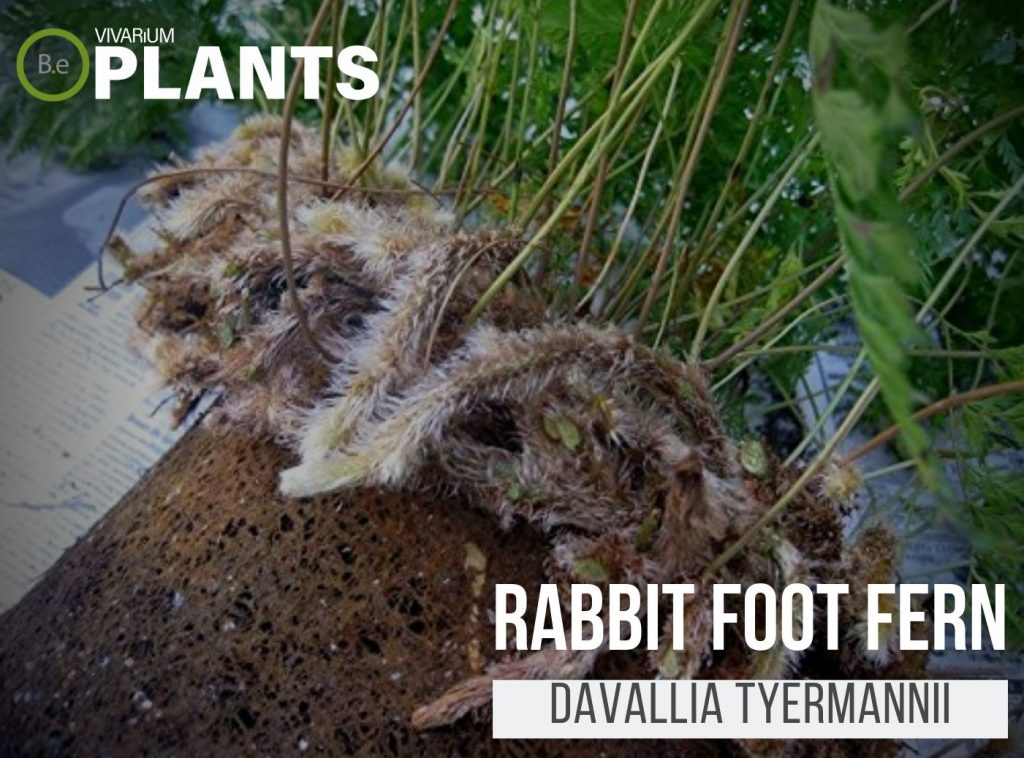

Rabbit Foot Fern (Davallia tyermanii)
The Rabbit Foot Fern is a beautiful, low–maintenance, ground–hugging terrarium plant that is perfect for open terrariums.
It has soft, velvety green foliage with a well–developed root system that spreads out in all directions and looks like rabbit’s foot, that‘s why the name.
Rabbit Foot Ferns prefer medium indirect light and should be kept at temperatures of 22–30ºC. When exposed to humidity, they form fine scales that add texture to their leaves and this makes them highly efficient in cleaning the air in terrariums.
They love humid, moist soil and do not like wet feet, so make sure that the substrate is well-drained. Overall, the Rabbit Foot Fern is an ideal open terrarium plant for a low-light, topless terrarium setting and is sure to be a beautiful addition to any space.
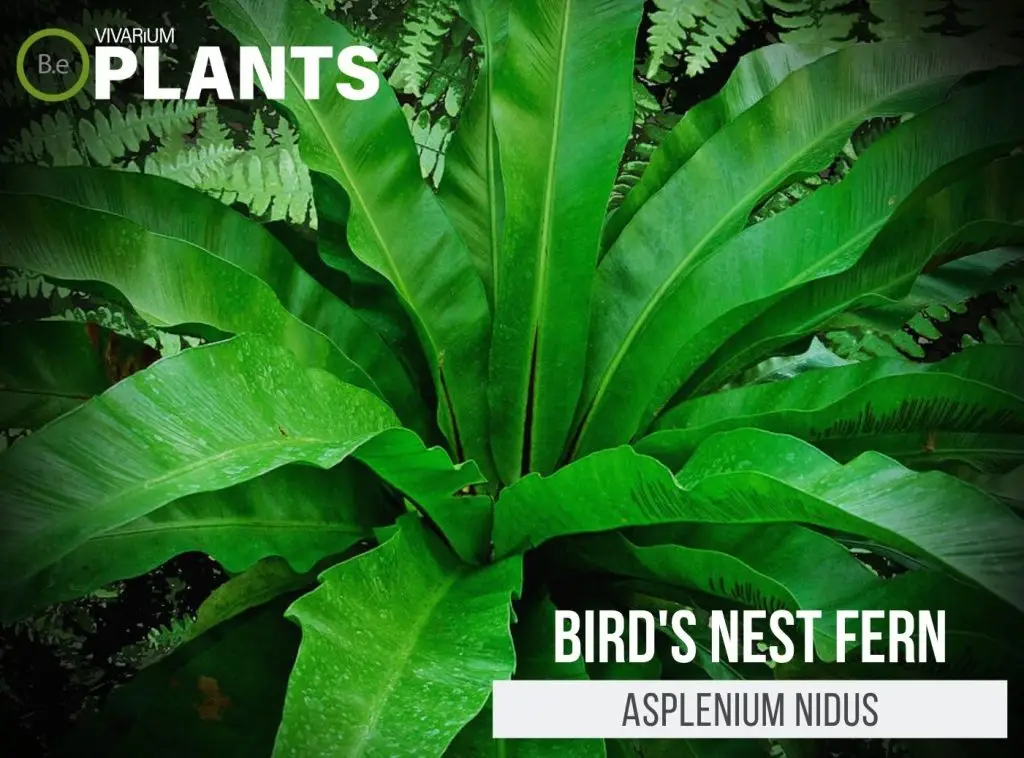

Bird’s Nest Fern (Asplenium nidus)
The Bird’s Nest Fern is a beautiful open terrarium plant with lush green fronds that are sure to brighten up any terrarium setting.
This plant is a great addition to any open terrarium as it thrives in high humidity, warm temperatures, and indirect sunlight.
This tropical plant grows outward, creating an impressive rosette shape, featuring beautiful green and variegated foliage. Its namesake, bird’s–nest, is justified as the center of each plant resembles a cup, making it a great nesting spot for a variety of pets.
This low–maintenance plant also requires minimal pruning and is extremely easy to propagate due to its ability to send up arching baby fronds.
The Bird’s Nest Fern makes a great open terrarium addition due to its ease of care and attractive appearance.


Silver Lace Fern (Pteris ensiformis)
The silver lace fern is a beautiful and decorative plant that is often used in open terrariums. This ornamental fern has delicate and elegant fronds, each composed of thousands of tiny silver leaflets that form a lacey–like appearance.
With its soft and contrasting color, the silver lace fern makes a great accent piece in any terrarium.
The best part about having this fern in open terrariums is that it needs only moderate environmental conditions to thrive, and can withstand periods of higher humidity and bright, indirect sunlight.
It is also a great choice for open terrariums because it is slow–growing, can survive periods of drought, and needs little maintenance.
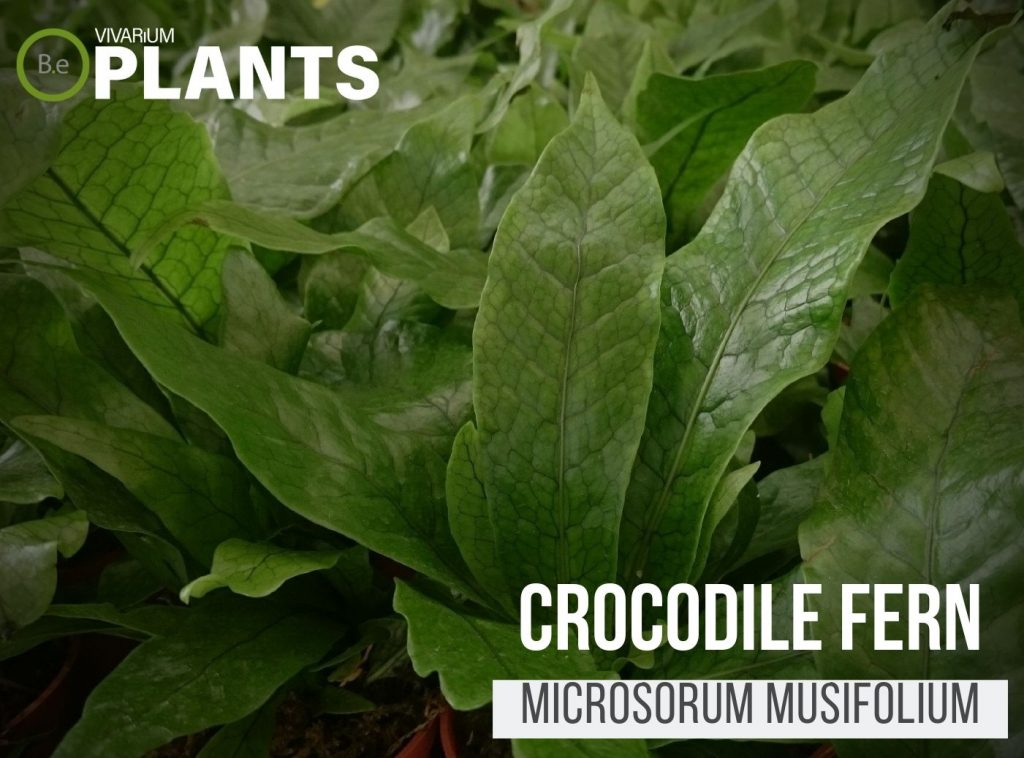

Crocodile Fern (Microsorum musifolium ‘crocodyllus’)
Crocodile Fern is a species of fern that is popular for use in terrariums. With its horizontally growing, deep green rippled fronds and thin veins, the Crocodyllus looks both rugged and elegant, making it a great addition to any terrarium.
It is a great plant choice for open terrariums as it is an epiphyte that derives its nutrients from the surrounding environment, meaning it doesn’t need soil to grow and can survive in higher light levels or higher humidity than some other terrarium plants.
In addition, the short, compact growth habit of the Crocodyllus makes it ideal for terrariums of all sizes, both enclosed and open.
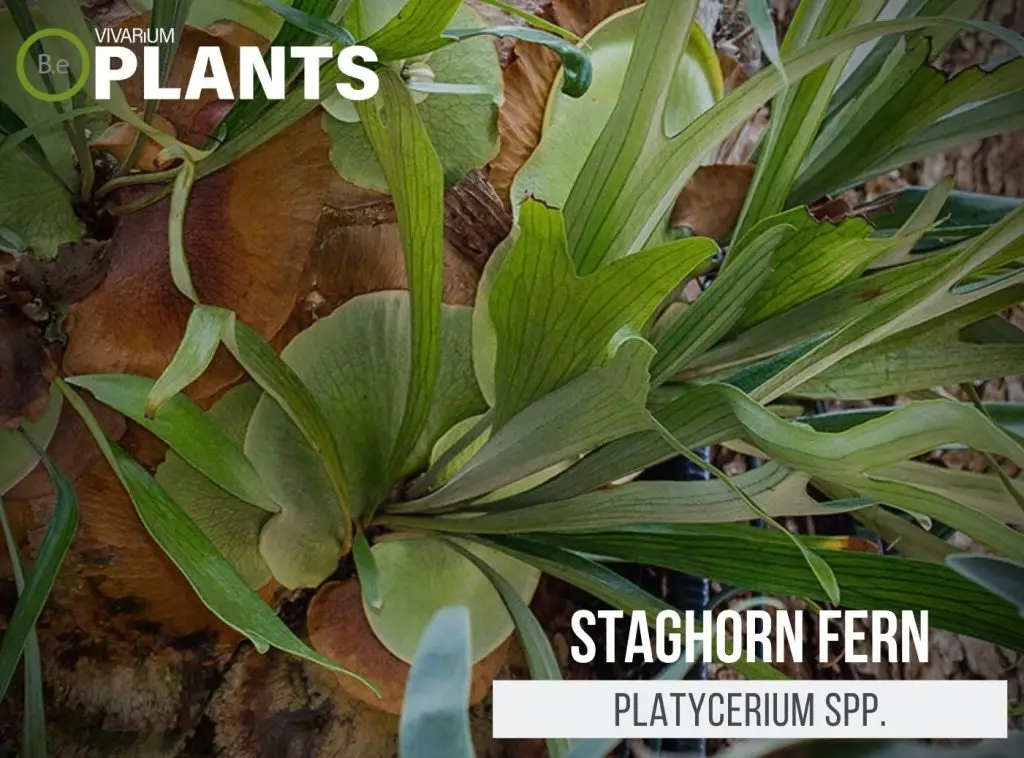

Staghorn Fern (Platycerium spp.)
Staghorn Fern is a perfect plant for an open terrarium environment. Staghorn Ferns have fronds that look like antlers, hence their name.
They can be found in many different color variations, ranging from green to brown, and they are easy to care for. Since they are epiphytes, they grow on other plants and don‘t require much soil while they’re thriving.
Staghorn Ferns prefer an environment with high humidity, good airflow, and indirect sunlight or medium light. They make great additions to terrariums because they don’t need too much maintenance.
In addition, Staghorn Ferns are great for keeping the terrarium‘s environment clean and healthy by absorbing toxins from the air and producing a substance called ‘Rainwater’.
So if you are looking for an open terrarium plant, Staghorn Ferns are a great choice.


Heart Fern (Hemionitis arifolia)
Heart Fern is a type of fern that is the perfect plant for open terrariums because of its petite size and low-maintenance needs.
This fern looks beautiful with its heart-shaped leaves and dainty foliage that make it an ideal highlight for small open terrariums.
It thrives in humid conditions and prefers indirect bright light, making it perfect for open terrariums as the humidity can be maintained indoors and avoid dehydration from direct sunlight.
It can also spread out and reach up to 12 cm in width with lush foliage, making it the perfect addition to any terrarium.


Button Fern (Pellaea rotundifolia)
The Button Fern, or Pellaea rotundifolia, is a great open terrarium plant due to its slow growth and small scale. It is a type of fern that is native to many parts of Australia and New Zealand.
The foliage of this plant is made up of simple, round-shaped leaflets that are thickly distributed around thin stems. This fern can reach no more than 12 inches in height and width, making it ideal for open terrariums.
The Button Fern does not require much attention or maintenance, other than an occasional spritz of water to help maintain moisture.
In addition to its attractive foliage, this fern also produces clusters of small, purple-brown-colored flowers in the late spring and early summer months.


Silver Ribbon Fern (Pteris cretica)
The Silver Ribbon Fern, or Pteris cretica, is a tropical, evergreen perennial plant native to Asia, the Caribbean, and parts of Africa.
It is a great choice for terrariums, especially open terrariums, due to its attractive fronds with a silver sheen that can reach a maximum height of 35-75 cm and a spread of 35 to 50 cm wide.
The silver ribbon fern is easy to care for. It does best in high humidity and temperatures of between 18-30 degrees Celsius, with bright, indirect sunlight or periods of artificial light, and requires moisture levels kept at an even-medium level.
Its slow growth rate makes it an ideal option for open terrariums and terrarium gardens, as it can offer an attractive steady backdrop without the risk of outgrowing its space.
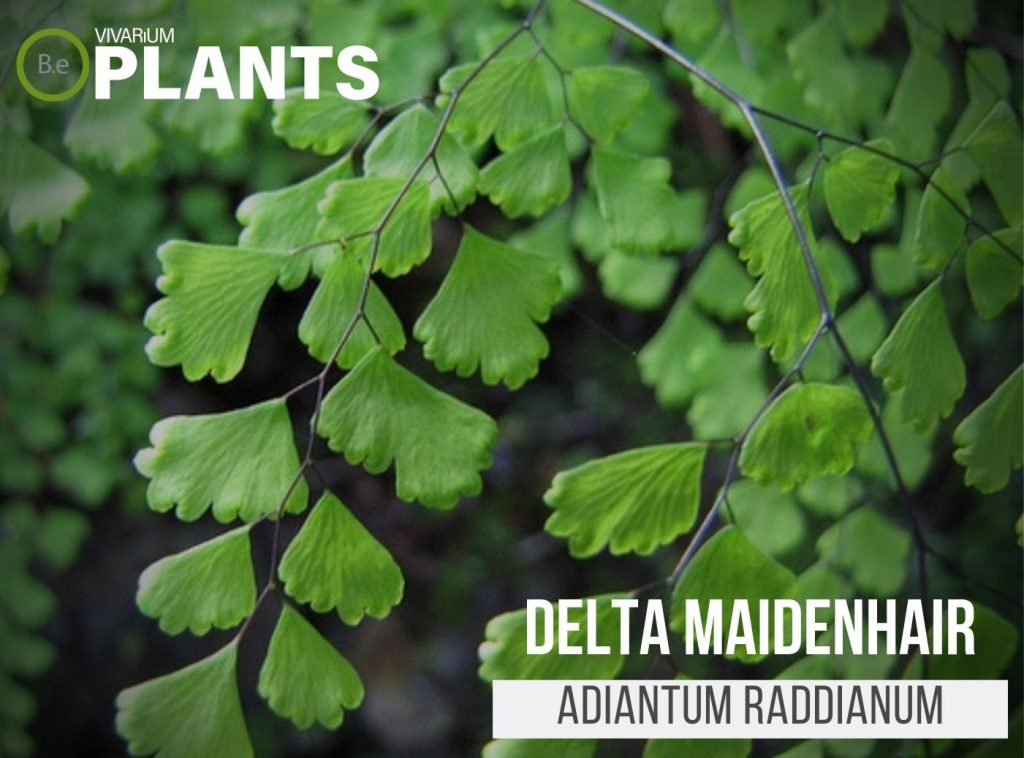

Delta Maidenhair Fern (Adiantum raddianum)
The Delta Maidenhair Fern is an ideal choice for open terrariums. It is a small, delicate fern with a low, spreading growth habit, delicate fan-shaped leaves, and small, dark brown spore clumps located underneath.
Its light olive green fronds, which contrast nicely against a darker-themed substrate and rocks, are finely cut and arranged in a circular pattern.
This fern thrives in slightly damp soil, with indirect, filtered light, and moderate humidity levels. The Delta Maidenhair Fern makes an attractive terrarium plant and its fine-textured fronds look great cascading down the sides of terrariums.
It is suitable for many different types of terrariums, including open terrariums with high humidity and indirect light.
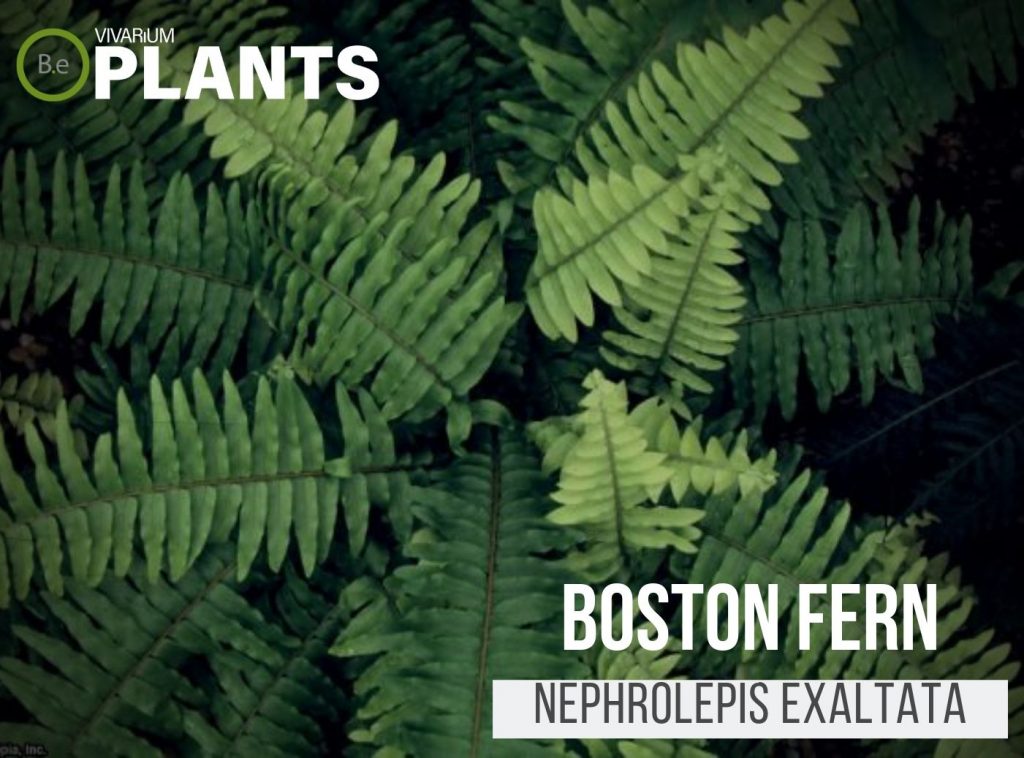

Boston Fern (Nephrolepis exaltata)
The Boston Fern is a traditional open terrarium plant with a lacy texture and bright green foliage. It is a type of evergreen perennial that grows in humid, tropical environments and looks best in bright, indirect light.
This plant, also known as Sword Fern, has long fronds with fine, glossy leaflets that droop in a graceful pattern. The Boston Fern is a great pick for terrariums because it is relatively low-maintenance and easy to care for.
Plus, it helps humidify the air in the terrarium and can act as a natural filter to reduce toxins.
It is also ideal for open terrariums since it prefers bright and humid environments. It can also adapt very well to lower levels of humidity, making it an excellent choice for a wide variety of terrarium types.
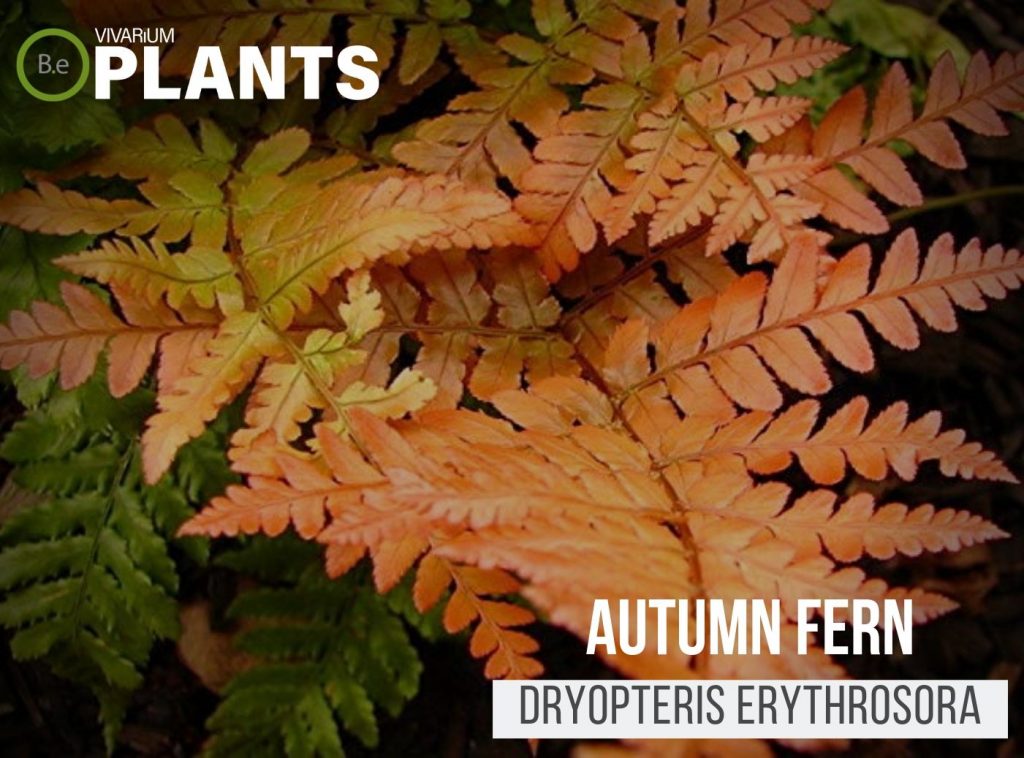

Autumn Fern (Dryopteris erythrosora)
Autumn Fern, or Dryopteris erythrosora, is a popular choice for open terrariums because of its interesting looks and ability to adapt to both high and low moisture levels.
It features delicate fronds that are deep red to pinkish in color and its foliage is feathery and fine textured. It is a perennial plant, with new fronds unfurling in the spring, maturing through summer, and then fading in autumn.
This makes it great for open terrariums because it can stay vibrant and active throughout the year, looking great even when other plants go dormant.
It needs consistently moist soil, with indirect light for best results – it thrives in plenty of light and humidity.
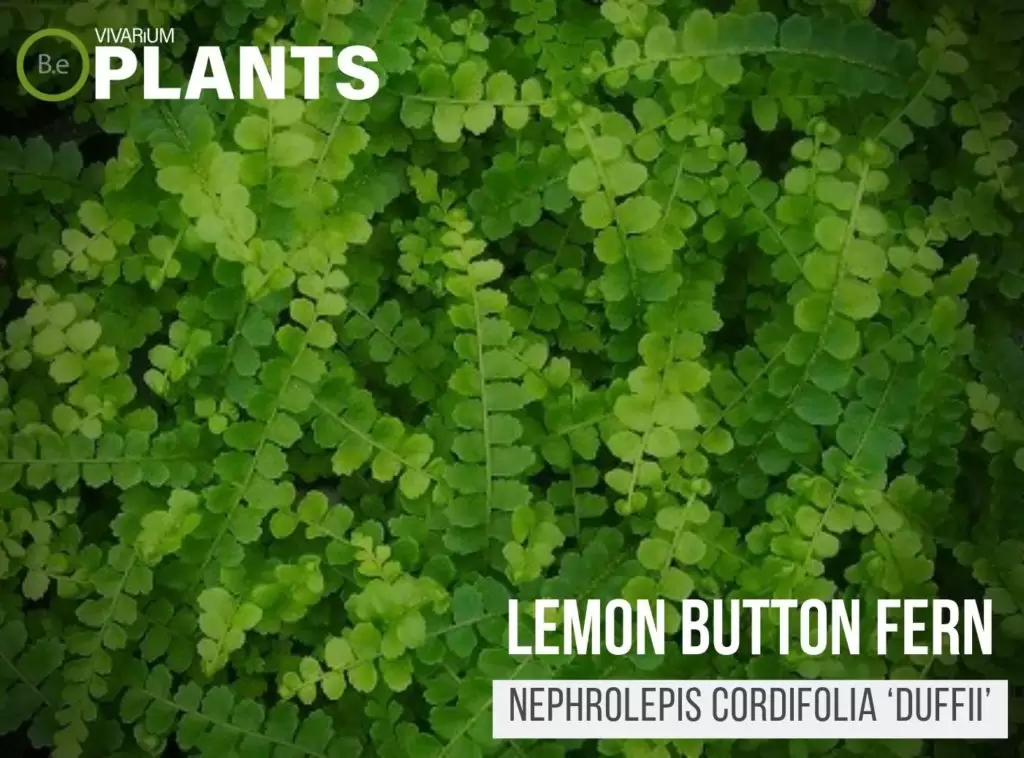

Lemon Button Fern (Nephrolepis cordifolia ‘duffii’)
The Lemon Button Fern or Nephrolepis cordifolia ‘duffii’ is a classic open terrarium plant that is native to tropical and subtropical regions.
It is known for its compact size and small, delicate fronds, which feature lemon-colored spots and are slightly ruffled in texture.
This plant is a great choice for open terrariums because it is very low-maintenance and requires minimal water and exposure to light.
Not only is it easy to take care of, but it also adds a special touch to any terrarium with its bright yellow spots.
Its small size and slow growth rate make it suitable for a wide variety of terrariums, including open ones.
Best Orchids For Open Terrariums
Orchids make great open terrarium plants as they thrive in humid, warm climates and require minimal care. Because of their stunning flower displays, they make a beautiful addition to any terrarium.
Their minimal water and fertilizer requirements, as well as their rich soil, make them low-maintenance plants. They can be left to thrive without needing a lot of extra care and help make any terrarium an eye–catching display.
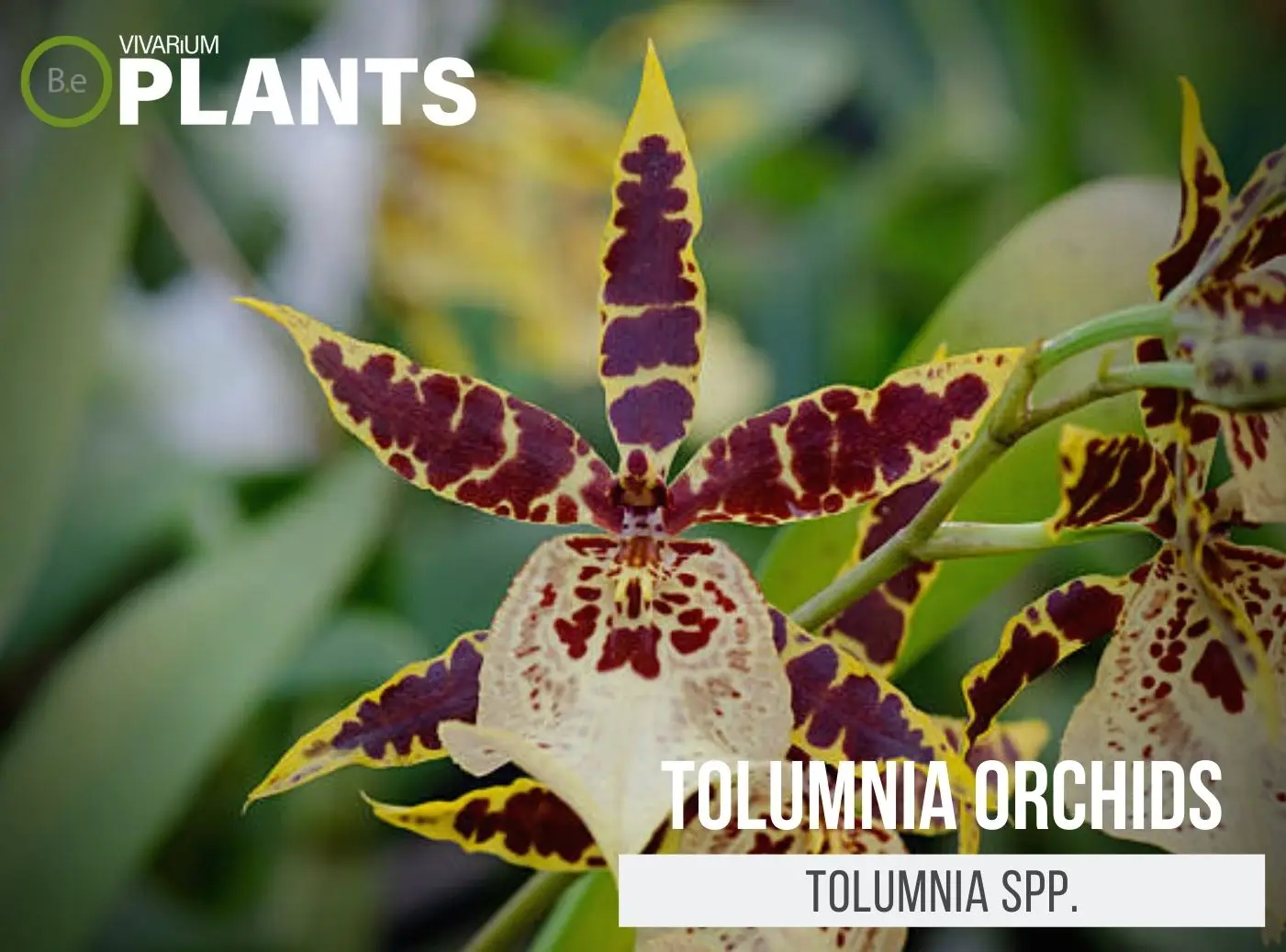
Tolumnia Orchids (Tolumnia spp.)
Tolumnia Orchids is an epiphytic plant native to Central and South America that is perfect for open terrariums.
It has small yellow, orange, and pink blooms, each with a unique patterning along the petals, and it also has glossy leaves that are vivid olive green.
Its compact size makes it well-suited to most terrarium types and layouts, while its water and light needs make it ideal for open terrariums.
The orchid’s adaptation to wet, humid, and bright areas makes them easy to care for and suitable for most terrarium owners.
Its blooms are especially vibrant in a humid environment, and the presence of water encourages new growth.
In addition, Tolumnia Orchids can remain undisturbed for long periods and requires minimal attention, making it an excellent choice for gardeners with busy lifestyles.
Platystele Orchids (Platystele Spp.)
Platystele Orchids are a group of orchids native to the jungles of Central and South America and grown as open terrarium plants.
These plants are so adaptable that they can grow in anything from warm tropical conditions to less humid environments and grow in a wide range of light levels.
The Platystele has small, strap-shaped leaves, usually with a light green color, and tiny round white-to-pink flowers that appear in early summer.
The flowers are so tiny that most gardeners won’t notice them unless they take a very close look.
Platystele plants are perfect for open terrariums, as they thrive in humid conditions, and low light, and stay fairly small (typically only two or three inches).
They are fast-growing, low-maintenance, and need minimal attention.
Dancing Lady Orchid (Oncidium spp.)
Dancing Lady Orchids are ideal plants for open terrariums due to their small size and versatility when it comes to light and water requirements.
They have waxy olive green leaves, square-shaped pseudobulbs, and long-lasting, brilliantly patterned flowers.
They provide a delightful addition to any terrarium and come in a variety of color options, including pink, yellow, and even combinations of red, orange, and yellow.
The best part is, with proper care and attention, they can flower almost year-round, providing an ever-changing colorful display.
With minimal effort and minimal upkeep, Dancing Lady Orchids make great open terrarium plants that fill any space with a beautiful and unique display.
Lepanthes Orchid (Lepanthes spp.)
Lepanthes orchids, or Lepanthes spp., are miniature flowering epiphytes native to high elevations and tropical climates. Although these plants are small, they pack a punch when it comes to attractive, delicate blooms.
Lepanthes orchids utilize thin pine bark and sphagnum moss to create their tiny little planters – the ideal environment for growing in an open terrarium.
These plants offer white, pink, yellow, and purple flowers, ranging from 3–10mm in diameter, giving them a whimsical, delicate appearance that is best appreciated up close.
Lepanthes orchids are great for open terrariums because they can thrive in an environment with higher humidity while thriving with medium to low light exposure.
They can also benefit from being in a more open environment, benefitting from the air circulation and higher humidity found in these setups.
Monkey Face Orchid (Dracula spp.)
The Monkey Face Orchid is a fabulous choice for open terrariums. This tropical terrestrial orchid has showy blooms that range in colors from yellow, pink, white, and red.
Its flowers are up to 1 inch in diameter and display a monkey face, giving this orchid its name. Its evergreen foliage is dark green in color and features round, heart-shaped leaves.
Its roots are tuberous and form a fibrous network to anchor the plant in its potting soil. The Monkey Face Orchid thrives in moist, well-draining soil and an environment that is humidity rich.
It is an extremely low-maintenance orchid that turns even the simplest terrariums into mini jungles.
Cattleya Orchids (Cattleya spp.)
Cattleya Orchids are one of the most mesmerizingly beautiful tropical orchids that can make for a stunning addition to any open terrarium.
They have large, round petals with stunning, vibrant colors. Depending on the variety, Cattleya Orchids can come in red, salmon, yellow, white, and purple.
The waxy flowers of the Cattleya Orchid have showy, lush foliage that can brighten up any terrarium.
Not only that, the soft, abundant roots of the Cattleya Orchid can act as an excellent form of substrate for other plants in the open terrarium.
Moreover, Cattleya Orchids prefer warm, humid weather, which makes them well–suited for an environment in an open terrarium.
All in all, Cattleya Orchids make for a stunning addition to any open terrarium, and their beauty and vibrant colors are sure to bring life to it.
Best Vines for Open Terrariums
Vine plants are a great option for open terrariums because they are able to maintain their bright colors even in low–light levels of terrariums.
They provide a colorful and textured look to any terrarium while allowing air to flow through the leaves. Vine plants are low–maintenance, easy to care for and respond well to trimmed and small pruning.
Their cascading foliage is also a great way to add a natural ambiance to any space.


String Of Pearls (Curio rowleyanus)
String Of Pearls is an extremely attractive and relatively low-maintenance open terrarium plant, native to arid habitats in Africa.
It is succulent and very drought-tolerant, making it a great option for terrariums. The plant resembles a long necklace, with bright green, round leaves that grow all the way down the long, thin stems in a string-like fashion.
This plant is also a great choice for open terrariums because of its ability to thrive with only minimal moisture and low maintenance.
Due to its temperature, humidity, and lighting requirements, String of Pearls is generally easier to keep than many other terrarium plants.


Wandering Jew (Tradescantia zebrina)
The Wandering Jew, also known as Tradescantia zebrina, is an evergreen perennial plant native to Mexico and Central America.
This low-light houseplant features thick, purple, striped foliage that gives it a unique, eye-catching appearance.
It is a particularly great plant for open terrariums because it is tolerant to low light, does not require repotting frequently, doesn’t need to be misted often, and helps to clean the air of harmful toxins.
It requires good soil drainage and should be watered every few weeks. The Wandering Jew is a great choice for open terrariums because it can tolerate a variety of light conditions.
It is also very easy to care for and adds a unique touch of color and texture to any space.
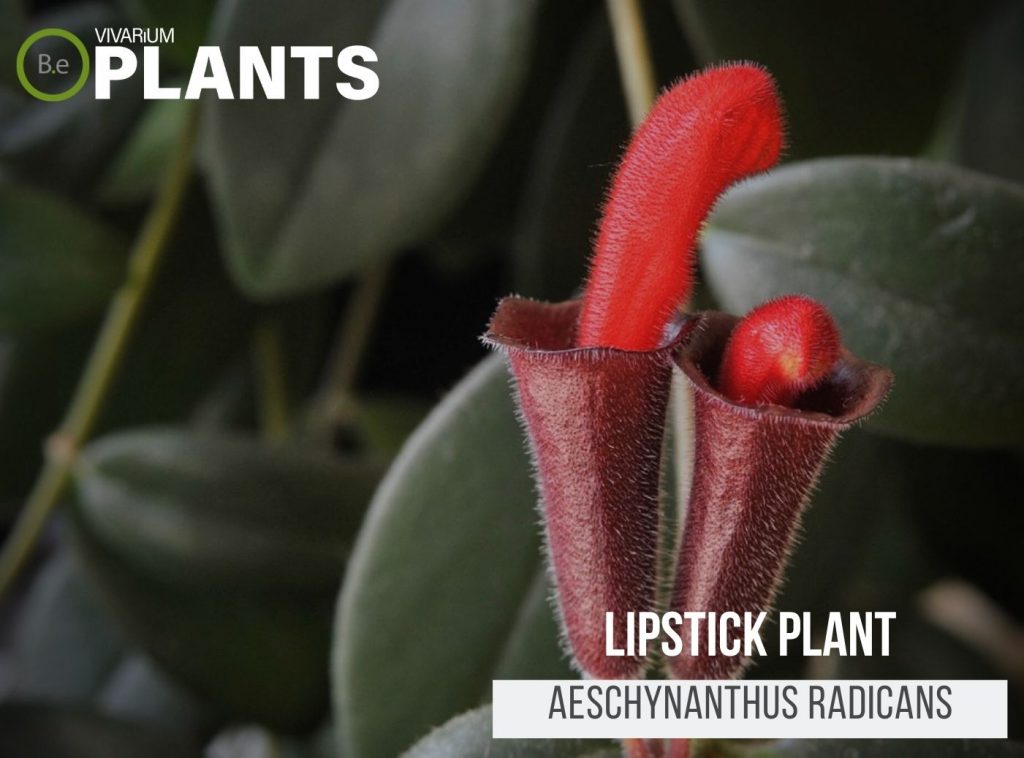

Lipstick Plant (Aeschynanthus radicans)
The Lipstick Plant is a great open terrarium plant. It has bright and lush green foliage and produces spectacular, tube-like flowers that resemble lipstick tubes, ranging in colors from red, orange, and yellow.
These flowers can grow up to 2 inches in length and attract hummingbirds and butterflies to your terrarium.
It is an epiphytic tropical plant native to the rainforests of southeast Asia and requires bright light and regular watering, but can tolerate some degree of neglect.
This makes it an ideal terrarium plant for open terrariums because it is able to tolerate drier conditions, but also loves moisture.
Moreover, it produces new blooms continuously and is also very hardy, making Lipstick Plant perfect for hobbyists who want to include vibrant colors and variety in their terrarium.
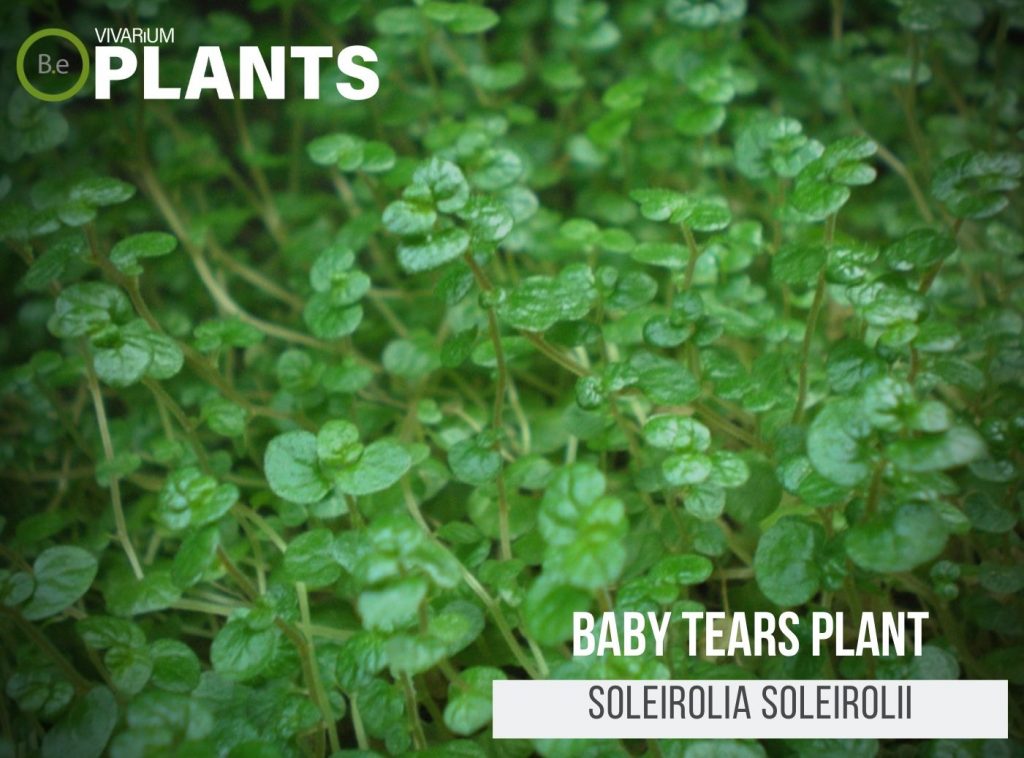

Baby Tears (Soleirolia soleirolii)
Baby Tears is an excellent plant for open terrariums due to its low light requirement, ability to thrive in moisture, and ability to cascade its cascading foliage.
It is an evergreen perennial with tiny rounded leaves, often in shades of green, silver-green, and purple. Its name comes from the fact that when touched its tiny foliage droops like a weeping willow.
In addition, with its small stature and low-growing nature, Baby Tears makes a great filler between other, taller terrarium plants.
It’s also low maintenance, with little requirements for soil fertilization. Because it naturally prefers humid conditions, Baby Tears is happy in open terrariums that are not completely sealed.


Radiator Plant (Peperomia spp.)
The Radiator Plant, also known as Peperomia spp., is an ideal plant for open terrariums. Its glossy, heart-shaped leaves come in varieties of green, silver, and copper.
It grows in clusters up to 6 inches high and spread up to 2 feet wide. This little plant is well suited for terrariums because it is a relatively low-maintenance, slow-growing plant and requires minimal light.
Radiator Plant prefers soils that remain slightly moist, but not soggy and enjoys being misted with water as an alternative to normal watering.
Its unique foliage creates an attractive addition to other indoor plants in a terrarium.


Satin Pothos (Scindapsus pictus ‘argyraeu’)
Satin Pothos is a popular terrarium plant with large, green leaves that feature silvery-white veins.
It’s an ideal plant for open terrariums since it’s capable of surviving in a wide range of humid conditions and is able to live with indirect light.
This makes the Satin Pothos a non-fussy, low-maintenance option for anyone looking to spruce up their terrarium.
It’s also great for brightening up space because of its stunning, variegated foliage. Plus, this plant is ideal for anyone without a green thumb as it’s as easy to care for as it is to admire.
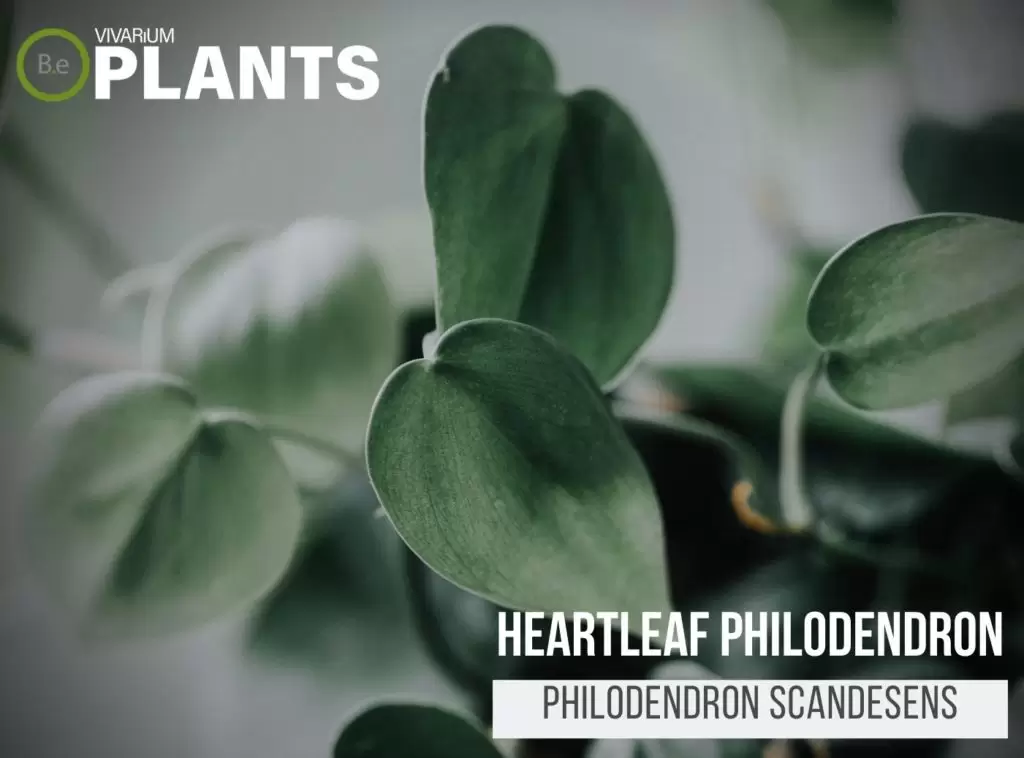

Heartleaf Philodendron (Philodendron scandesens)
Heartleaf Philodendron is a great terrarium plant because its trailing foliage looks great cascading from high terrarium walls. It is a creeping, low-maintenance vine that has heart-shaped foliage that is glossy and bright green in color.
This plant can also be grown in baskets for a pyramidal look. It is an ideal plant for open terrariums because it is heat-tolerant and doesn’t need as much humidity as some other varieties do.
In addition, this plant also responds well to light trimming, so you can shape it into almost any type of arrangement. It is sure to add a unique touch to any terrarium garden.


Philodendron Brasil (Philodendron hederaceum)
Philodendron Brasil is an attractive and easy-to-care-for open terrarium plant. It has lush green leaves with splashes of yellow around the edges and is highly tolerant of both light and water, making it an excellent choice for open terrariums.
With its vining habit and versatile growth habit, it is well suited for open terrariums as it can remain relatively contained in space or grow along pathways and terrarium walls to create a cascading effect.
It is an evergreen plant, meaning it can be an eye-catching feature plant all year round and requires only minimal attention to keep it looking its best.
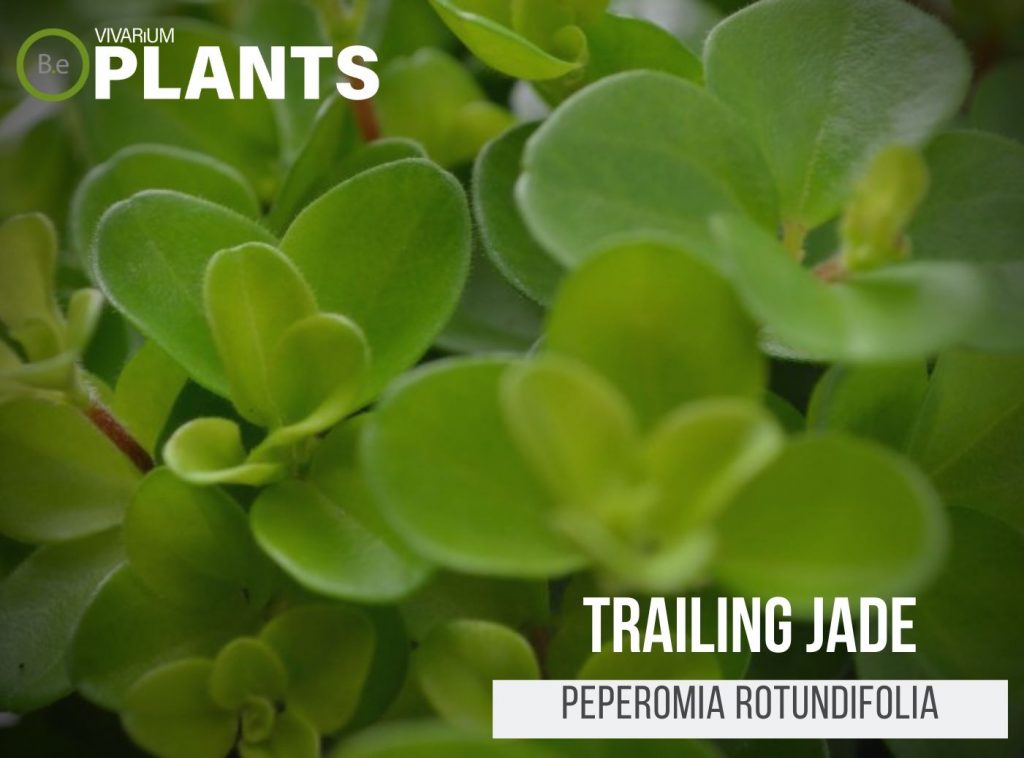

Trailing Jade (Peperomia rotundifolia)
Trailing Jade is a small evergreen perennial plant native to the Caribbean and Central America that is ideal for open terrariums.
It has succulent, fleshy stems and leaves, with small round leaves in shades of deep green or red. This plant does best in humid environments, and its warm-weather growth thrives in a terrarium’s sealed, warm and humid environment.
Trailing Jade is widely admired for its tolerance of low light and low maintenance needs. It grows fast, making it a perfect and easy addition to any open terrarium.
Its glossy, variegated leaves provide a splash of color and a unique, waxy texture to any terrarium. Its trailing vines are great for adding depth to the terrarium, and the fast-growing vines and foliage make it an ideal choice for open terrariums.


Polka Dot Plant (Hypoestes phyllostachya)
The Polka Dot Plant is an eye-catching plant that offers bright green foliage with colorful dots throughout. This beautiful open terrarium plant is relatively easy to care for and thrives in low-light settings.
Its many vibrant dots of color, which can range from pink to red to purple, make it an excellent choice when placed in open terrariums where light can reach it.
It produces lovely, small, fuzzy blooms that further contribute to its charm. The Polka Dot Plant has a low-growing nature, making it the perfect companion to taller plants, such as a fern or ivy, in open terrariums.
Furthermore, this plant does well with regular misting and is quite tolerant of indoor environments.
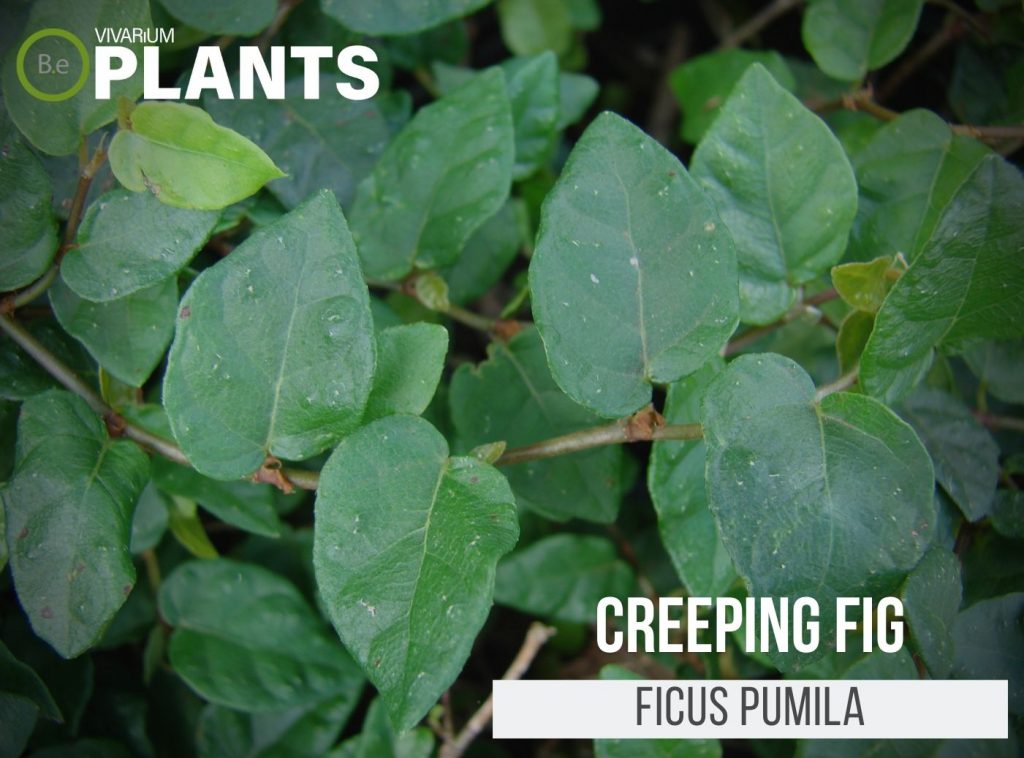

Creeping Fig (Ficus pumila)
Creeping Fig is an evergreen perennial plant that is a great choice for open terrariums. It has smooth, waxy green leaves and a compact, bushy habit that can easily be controlled with pruning.
The dark green leaves can reach up to 1/2 an inch long and tend to trail down creating a beautiful display. This plant is fast-growing and vining, so it is perfect for cascading or climbing in larger open terrariums.
It prefers a humid environment and warm temperatures, making it well-suited to an open terrarium. It can also handle some moisture, but be sure not to overwater it.
Creeping Fig is an easy-to-maintain terrarium plant that is a great choice for adding texture and foliage to your open terrariums.
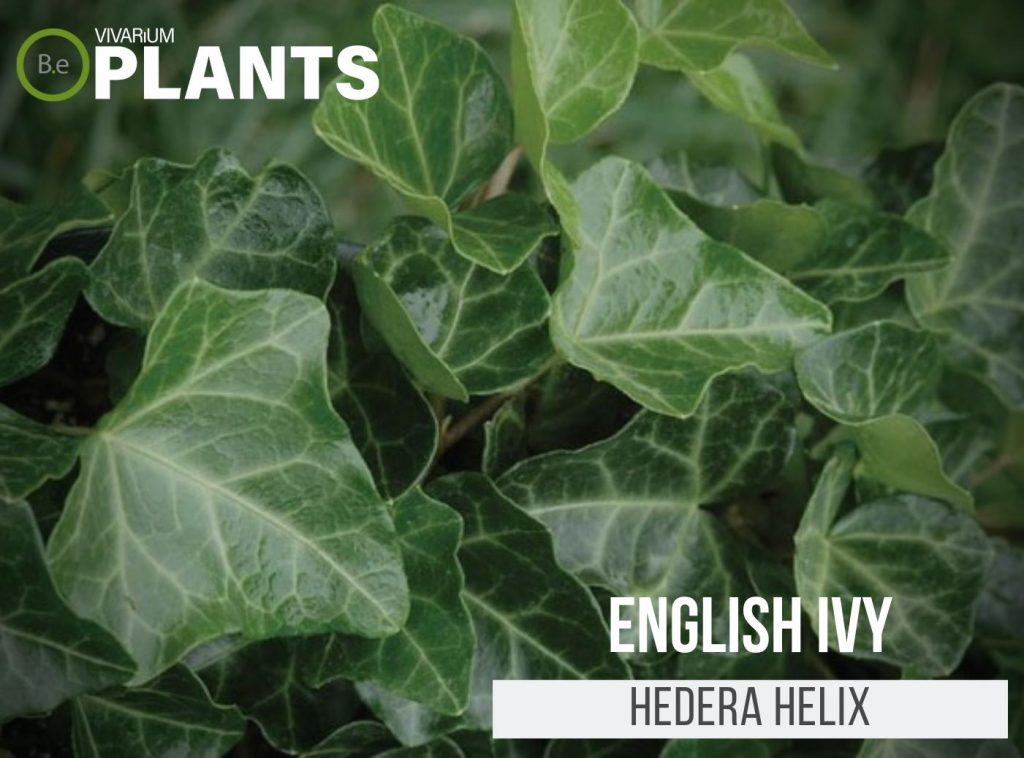

English Ivy (Hedera helix)
English Ivy is an evergreen, climbing, and trailing plant that is a popular choice for open terrariums.
It grows lush, dark green foliage covered in small leaflets and has small white, yellow, or green-yellow flowers in panicles that are enjoyed by both people and pollinators.
English Ivy is a hardy and easy-to-care-for houseplant and can be used to spruce up many terrarium designs.
It is one of the best plants to use in open terrariums due to its ability to tolerate low light, as well as its slow-growing habit and ability to self-attach to objects like driftwood and rocks.
Its trailing foliage also makes it look great in containers of all sizes and can be used to enhance unique terrarium displays.


Devil’s Ivy (Epipremnum aureum)
Devil’s Ivy, scientific name Epipremnum aureum, is a popular open terrarium plant that is great for adding a lush, green look to any open terrarium.
It is a fast-growing vine with bright green, heart-shaped leaves and will often climb up trellises within a terrarium.
The vine is fairly easy to care for and can even tolerate a range of shade so it is suitable for terrariums with lightly filtered sunlight.
Devil’s Ivy is also an excellent plant choice for humid, tropical open terrariums because it can help to increase humidity and oxygen levels in the environment.
The plant is available in a variegated version with yellow and white streaks to provide some extra color. Devil’s Ivy is the perfect open terrarium plant for terrarium enthusiasts looking for a lush, tropical look.


Asparagus Fern (Asparagus setaceus)
Asparagus Fern is a beautiful, easy-to-care-for terrarium plant. With its lush green leaves, delicate leaflets, beautiful and unique feather-like textures, and vigorous growing habits, Asparagus Fern makes a great addition to any open terrarium.
It also has the ability to thrive in almost any environment, even lower-light areas. Asparagus Fern’s colorful foliage can be anything from yellow-green to rich olive green depending on how much light and moisture it is receiving.
It is perfect for a terrarium because it is low maintenance and does not need frequent watering, making it a great addition to terrariums with open lids and lower rainfall needs.
As an open terrarium plant, it can also be used for decorating and enhancing terrarium displays, adding visual appeal.
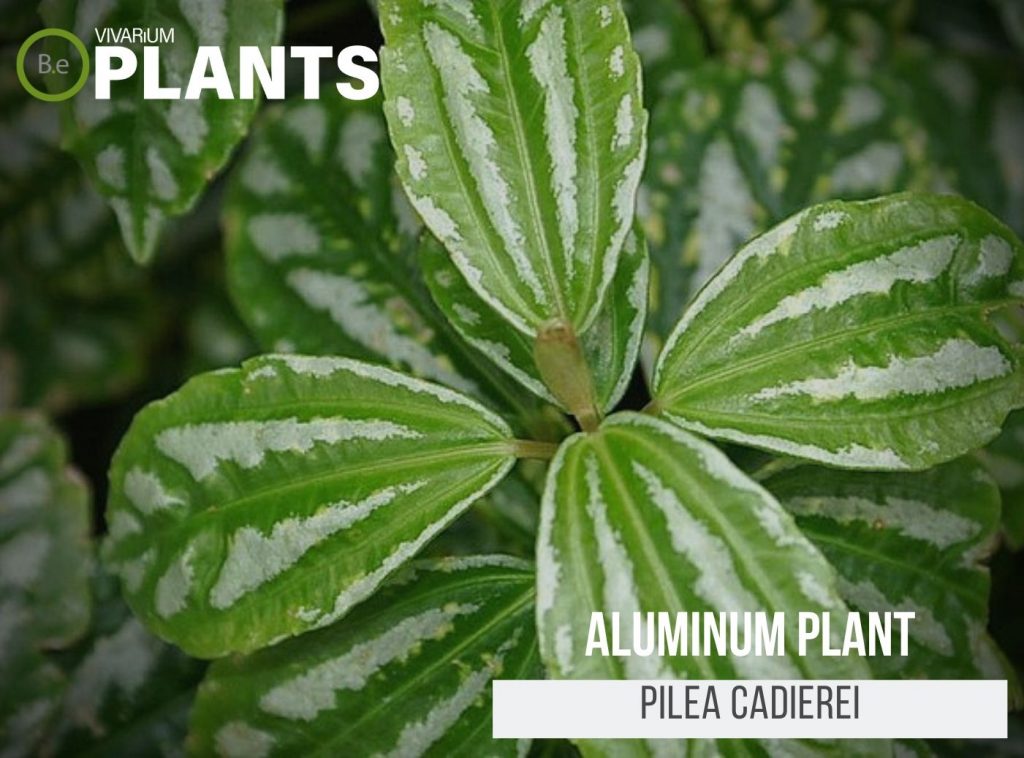

Aluminum Plant (Pilea cadierei)
Aluminum Plant is an attractive, low-maintenance open terrarium plant. It has glossy, heart-shaped green leaves that are decorated with silver-colored markings.
The trifoliate foliage is quite striking and this semi-trailing plant is ideal for displaying in hanging baskets and terrariums. Aluminum Plant is easy to care for and requires minimal pruning or trimming.
Its unusual markings and trailing habit make it stand out from the other plants in an open terrarium.
It’s medium to bright light requirement and its endurance in both dry and wet conditions make it a great choice for an open terrarium.


Creeping Jenny (Lysimachia nummularia)
Creeping Jenny is a great plant for open terrariums due to its hardy nature and adaptability to different levels of moisture.
It is a low-growing, evergreen, trailing, or creeping perennial which is used as a ground cover and has light green leaves with an almost yellowish tinge that can grow up to 4 or 5 inches in length.
The stems and leaves are often arranged in a spreading or whorled pattern and small yellow flowers appear on the tips of the stems in summer and fall.
This plant does well in terrariums due to its ease of maintenance, its capability to tolerate low levels of light, and its ability to thrive in hot and humid environments.


Trailing Daisy (Sphagneticola trilobata)
Trailing Daisy is a beautiful and versatile flowering perennial, making it a great choice for an open terrarium. This plucky little plant is a member of the asteraceae family and is native to the Caribbean and Latin America.
It features dainty, daisy-like blooms that come in a variety of colors – mostly white and yellow, but some plants can also have pink or violet flowers. Trailing Daisy has a low and slow growth habit, which makes it perfect for open terrariums.
Its slow growth and low maintenance nature, along with its deep root system, make it a great choice for terrariums that don’t need frequent pruning.
Additionally, the fact that it trails adds interest at the base of the terrarium and helps to soften the hardscaped elements within.
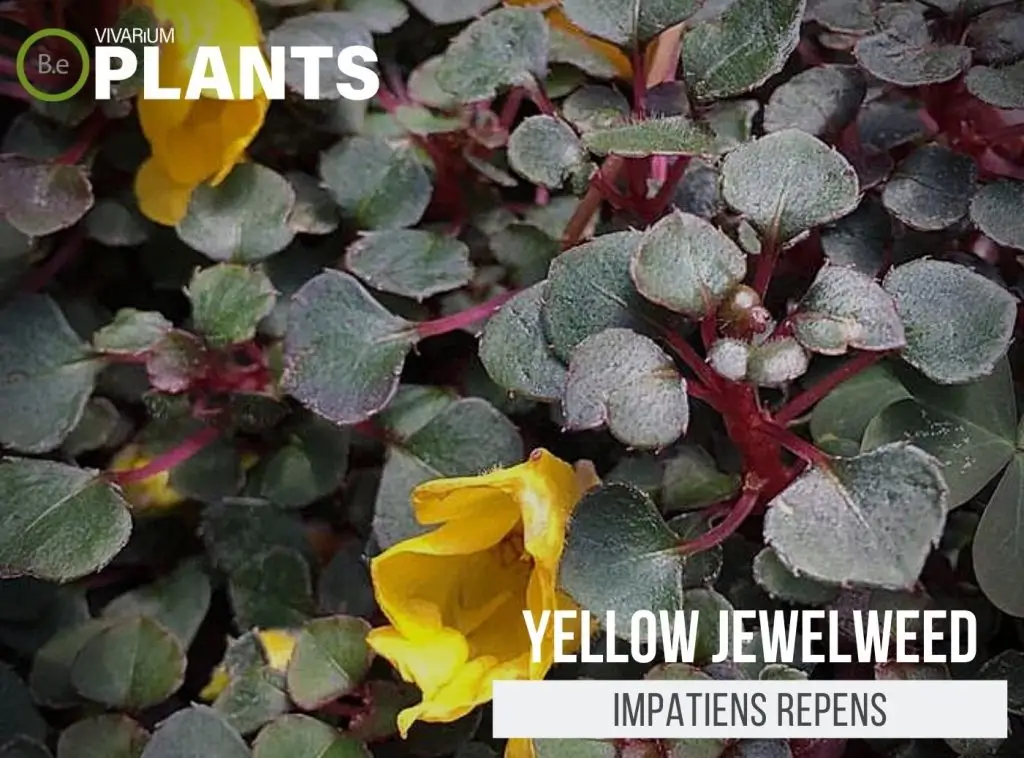

Yellow Jewelweed (Impatiens repens)
Yellow Jewelweed is an annual herbaceous flowering plant that is native to the Northeastern, Mid-Atlantic, Southeastern, and Midwestern United States.
It is characterized by its bright yellow, small, five-petalled flowers with curved pointed tips, large pink seed pods, and green oval-shaped leaves with small orange spots.
Yellow Jewelweed is a great choice for open terrariums, as it grows quickly, propagates easily, and is tolerant of low light and wet environments.
It is also extremely low maintenance, as it needs minimal care aside from watering twice a week. Its bright and cheerful flowers can also add beautiful pops of color to any open terrarium.
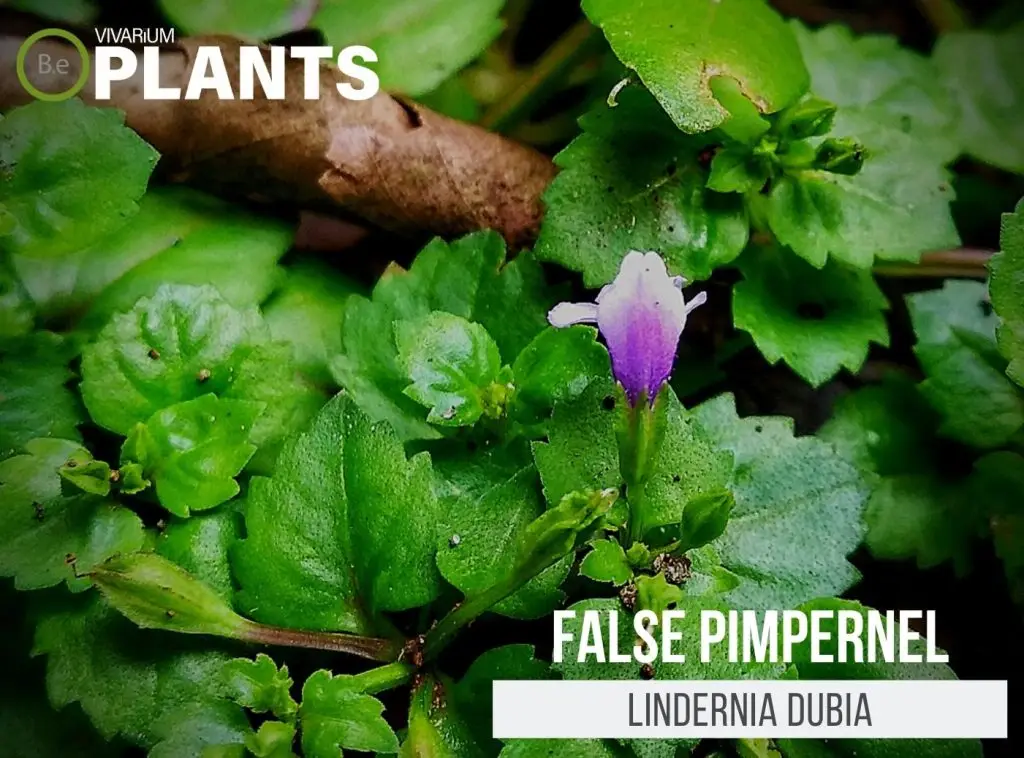

False Pimpernel (Lindernia dubia)
False Pimpernel is a sturdy and versatile open terrarium plant ideal for any terrarium gardener. It has small, triangular, or rounded leaves growing in an opposite pattern.
It grows in compact 8″ to 24″ mats and can be easily divided or cut back with shears or scissors. False Pimpernel is also easy to propagate by stem cuttings and is incredibly hardy in open terrariums, making it one of the most popular open terrarium plants.
False Pimpernel grows best in partial shade with moderate indirect light, plenty of humid air, and moist, well-draining soil.
This plant provides an interesting contrast of color to an open terrarium, with its deep-green foliage and vibrant purplish-pink flowers that bloom from spring to early fall.
This is an excellent plant for the beginning grower, as well as more experienced terrarium enthusiasts!
Setting Up Your Open Terrarium
- Choose the right terrarium container– You’ll need to select a container that is large enough to house the plants you have in mind. If you are using live plants, make sure to choose a container that has enough drainage holes for the plants to receive adequate drainage. If you are using artificial plants, you won’t need any drainage holes.
- Select the correct terrarium soil– Next, you’ll need to choose the right soil for the open terrarium. Ideally, the soil should be well-draining and nutrient-rich. You can purchase a special soil mix for terrariums or make your own.
- Pick the perfect plants– Now it’s time to choose the plants that you’d like to add to your terrarium. It’s important to select plants that don’t require too much sunlight or water. Some good options include any of the plants we covered earlier in this article.
- Arrange the plants– Once you’ve chosen the plants, it’s time to arrange them in the terrarium. Start by placing the taller plants in the back and the shorter plants in the front.


Caring for Your Open Terrarium Plants
Caring for open terrarium plants requires the right amount of light, water, and temperature to ensure their longevity. Depending on the type of plants you choose, the amount of light, water, and temperature will vary.
Light
The lighting requirements for open terrarium plants will vary based on the type of plants you choose. In general, most open terrarium plants will need indirect sunlight, rather than direct sunlight, and the intensity of the light should be adjusted accordingly.
For example, succulents, which tend to thrive in arid conditions, need more direct sunlight, while ferns will require more shade. The amount of light should also be adjusted to the size of your terrarium – larger terrariums will need more light to support their plants.
It’s important to regularly check the amount of light in your terrarium to make sure it’s not too much or too little for your plants.
Water
When it comes to watering open terrarium plants, it’s important to remember that each type of plant will require different amounts of water. Generally, succulents and air plants require less water than other types of plants because they are adapted to more arid conditions.
Cacti may require even less water than succulents, and should only be watered very sparingly. Ferns, on the other hand, require more water than succulents and cacti and should be watered regularly.
Orchids, vines, and other tropical plants also require more water than succulents and cacti and should be watered according to the instructions on the packaging or from a professional.
Once you’ve determined how much water each of your plants requires, it’s important to stick to a regular watering schedule to ensure that your terrarium is properly hydrated.
Temperature
Temperature is an important factor to consider when caring for open terrarium plants. Depending on the type of plants you choose, the ideal temperature can vary. For example, succulents and air plants thrive in temperatures between 65-80 degrees Fahrenheit.
Miniature ferns and other tropical plants prefer temperatures around 75-85 degrees Fahrenheit. Orchids and vines like warmer temperatures of 70-85 degrees Fahrenheit.
To make sure your plants are getting the right temperature, you may need to supplement with artificial heat or invest in a thermometer to measure the temperature in your terrarium.t temperature, your terrarium should thrive!


In Summary
Open terrarium plants are a great way to add some greenery to your home. They come in a variety of vibrant colors and thrive in arid environments. Setting up and caring for your open terrarium is easy, as long as you are mindful of the light, water, and temperature needs of the plants.
With the right knowledge and care, your open terrarium plants can thrive for years to come. If you’re looking for a unique and eye-catching way to spruce up your space, open terrarium plants are a great choice.
Frequently Asked Questions
Succulents, air plants, creeping figs, ferns, orchids, and mosses are all popular plants to put in an open terrarium. Other options include tropical plants, climbers, and trailing plants.
1. Water the terrarium plant only when the top layer of soil is dry.
2. Maintain moist but not soggy soil.
3. Place the terrarium in a spot with indirect sunlight.
4. Remove dead or dying foliage, if needed.
5. Occasionally clean the glass of the terrarium.
6. Mist the plant periodically to keep the environment humid.
The frequency of misting an open terrarium depends on the type of plants and the environment. Generally, you should mist lightly every other day.
A terrarium can last for many years if the environment of the terrarium is suitable for the plants and animals inside. The longevity of a terrarium can be affected by factors such as proper lighting, water, temperature, and ventilation. The life of a terrarium can vary between one to five years.
There are several reasons why an open terrarium may be dying, such as lack of sunlight, too much or too little water, low humidity levels, and/or deficiencies in nutrients in the soil. It is important to create the right balance of temperature and humidity levels that are suitable for the specific plants in the terrarium. Proper drainage and ventilation, as well as correct watering levels, are also essential for a healthy open terrarium environment.
Open terrariums need moderate to bright, indirect light for most of the day. Depending on the plants you choose for your open terrarium, you may need to adjust the lighting to ensure optimal growth. Some plants may require more direct light, while others prefer indirect light.
Yes, succulents are well–suited to open terrariums, as they are low maintenance and require minimal water and sunlight. Succulent terrariums can also be an interesting and aesthetically pleasing addition to any room.

